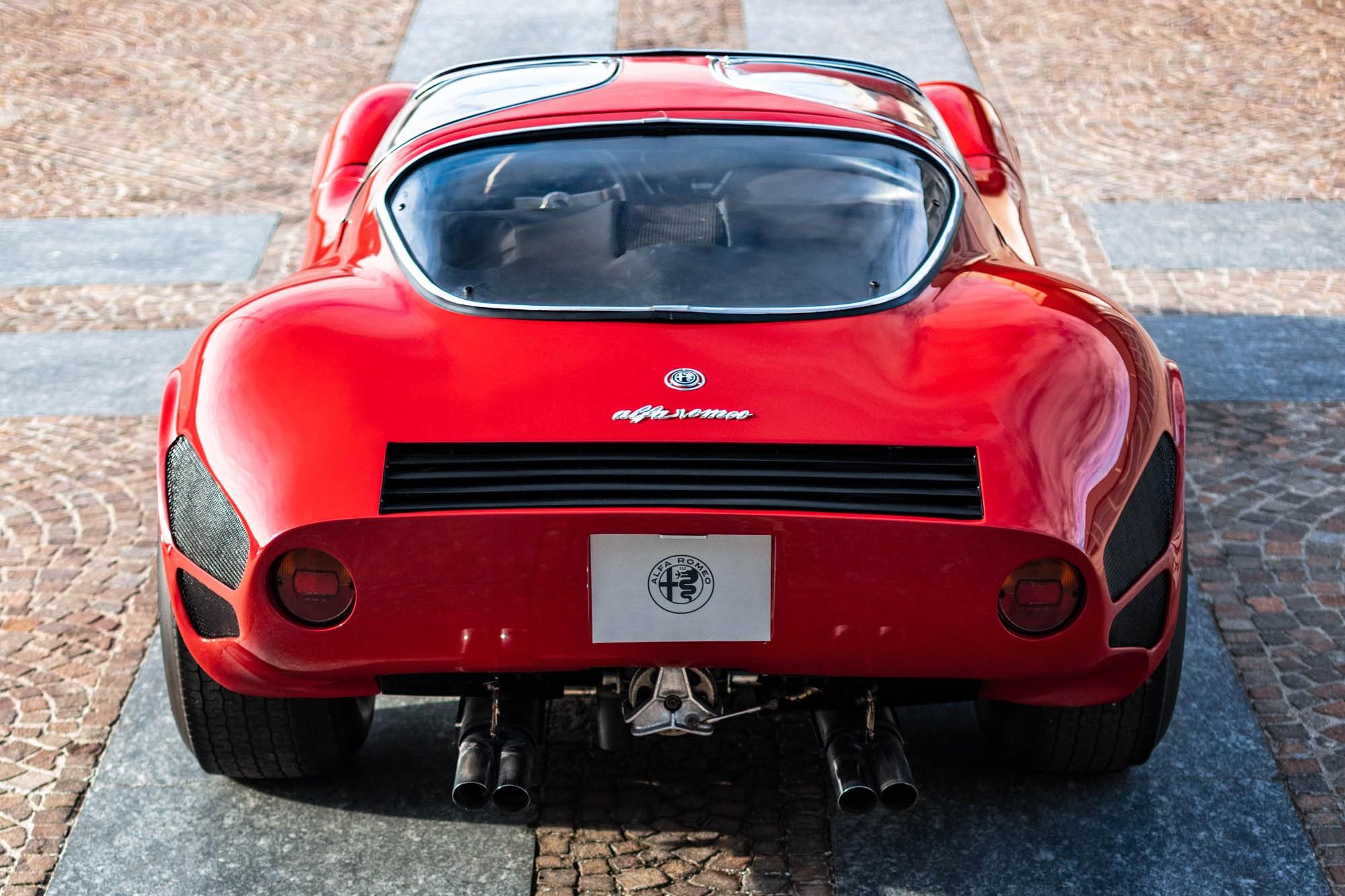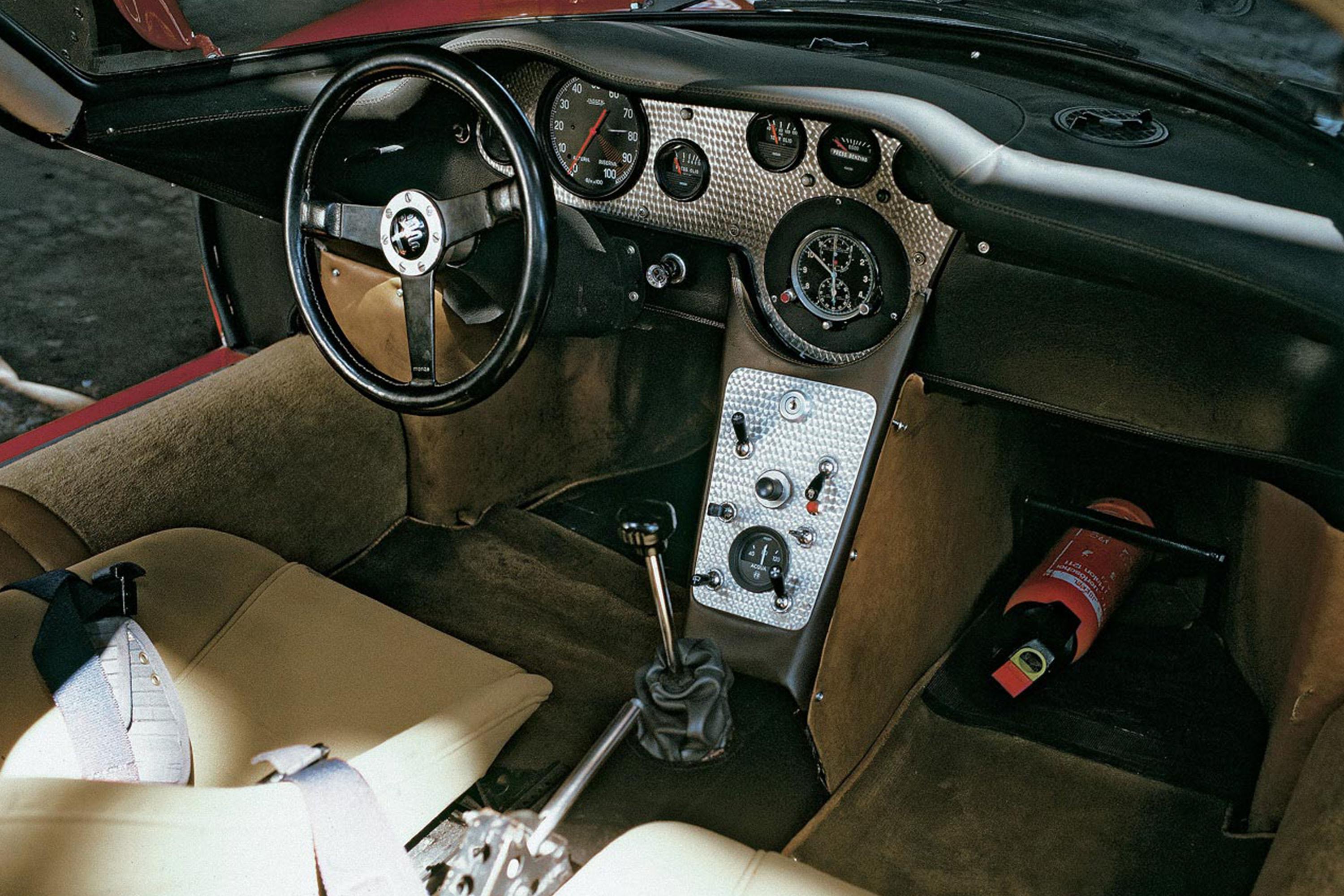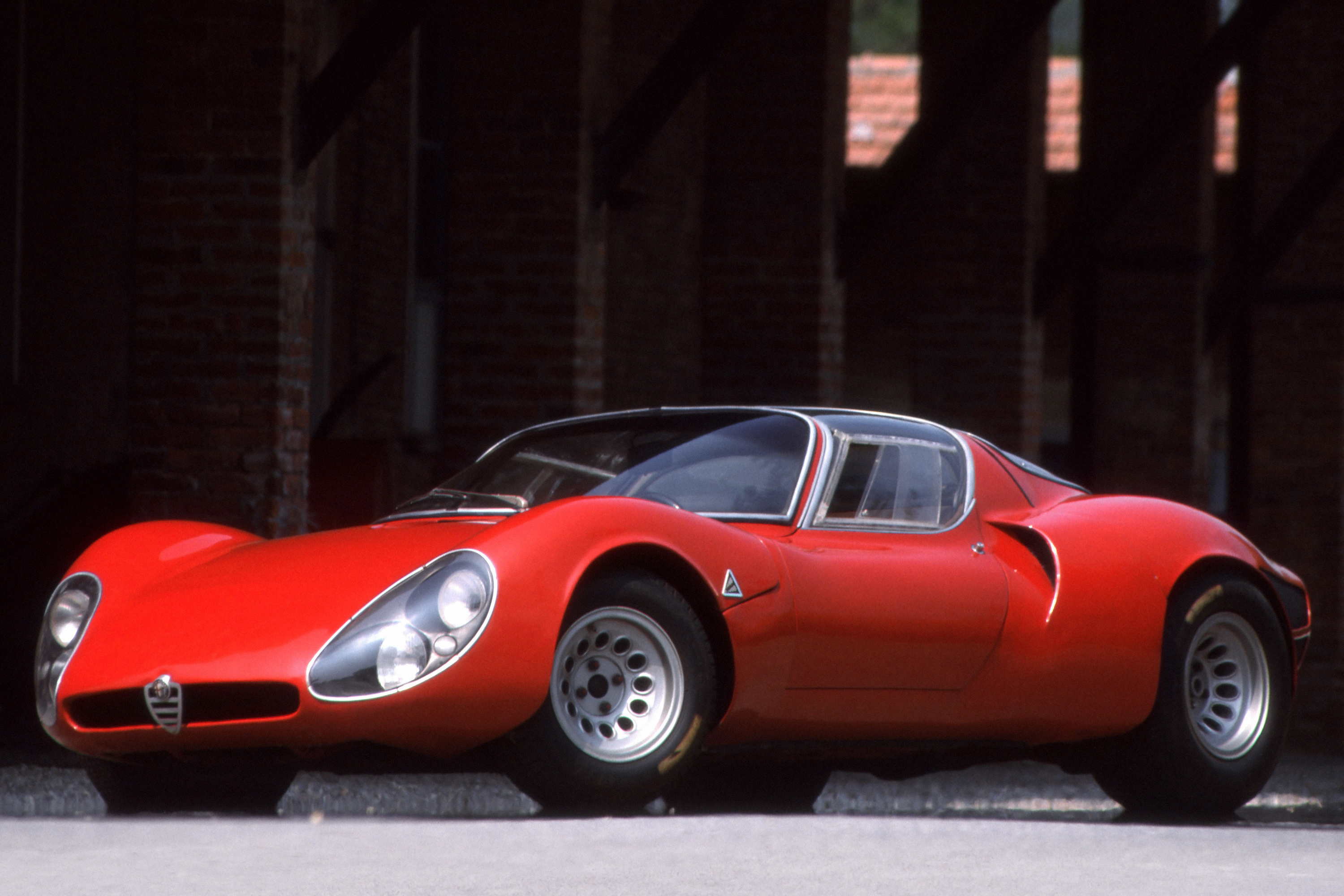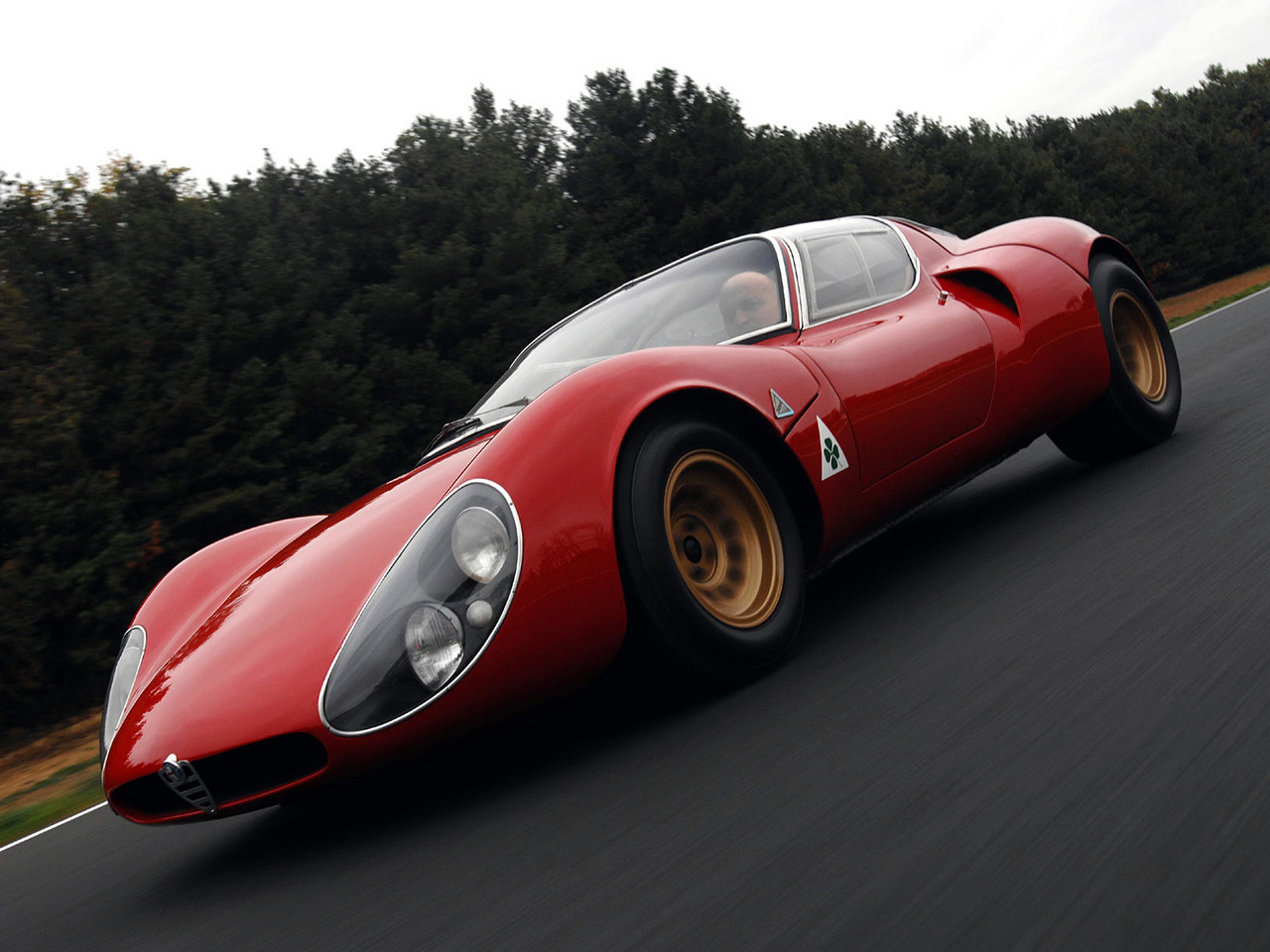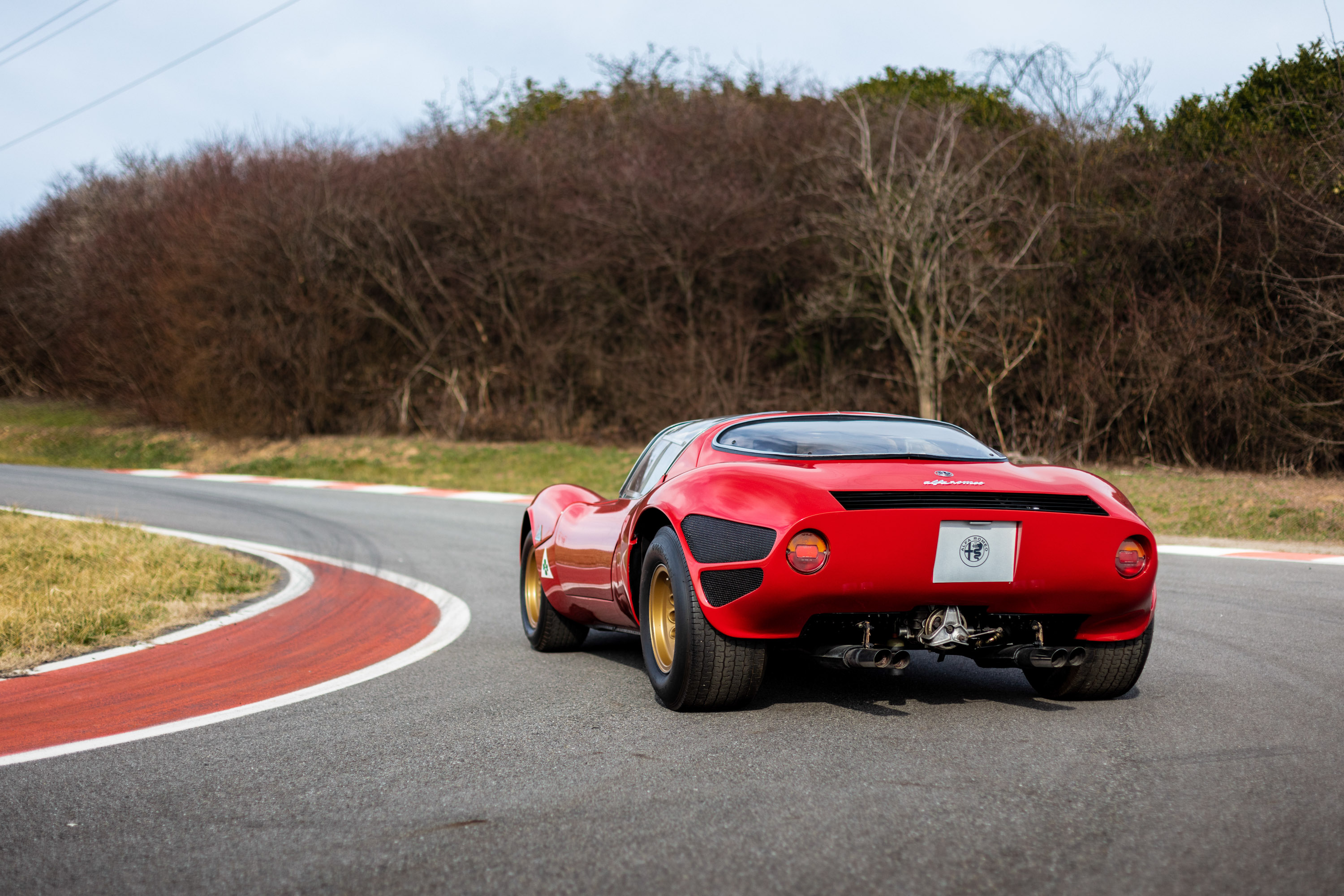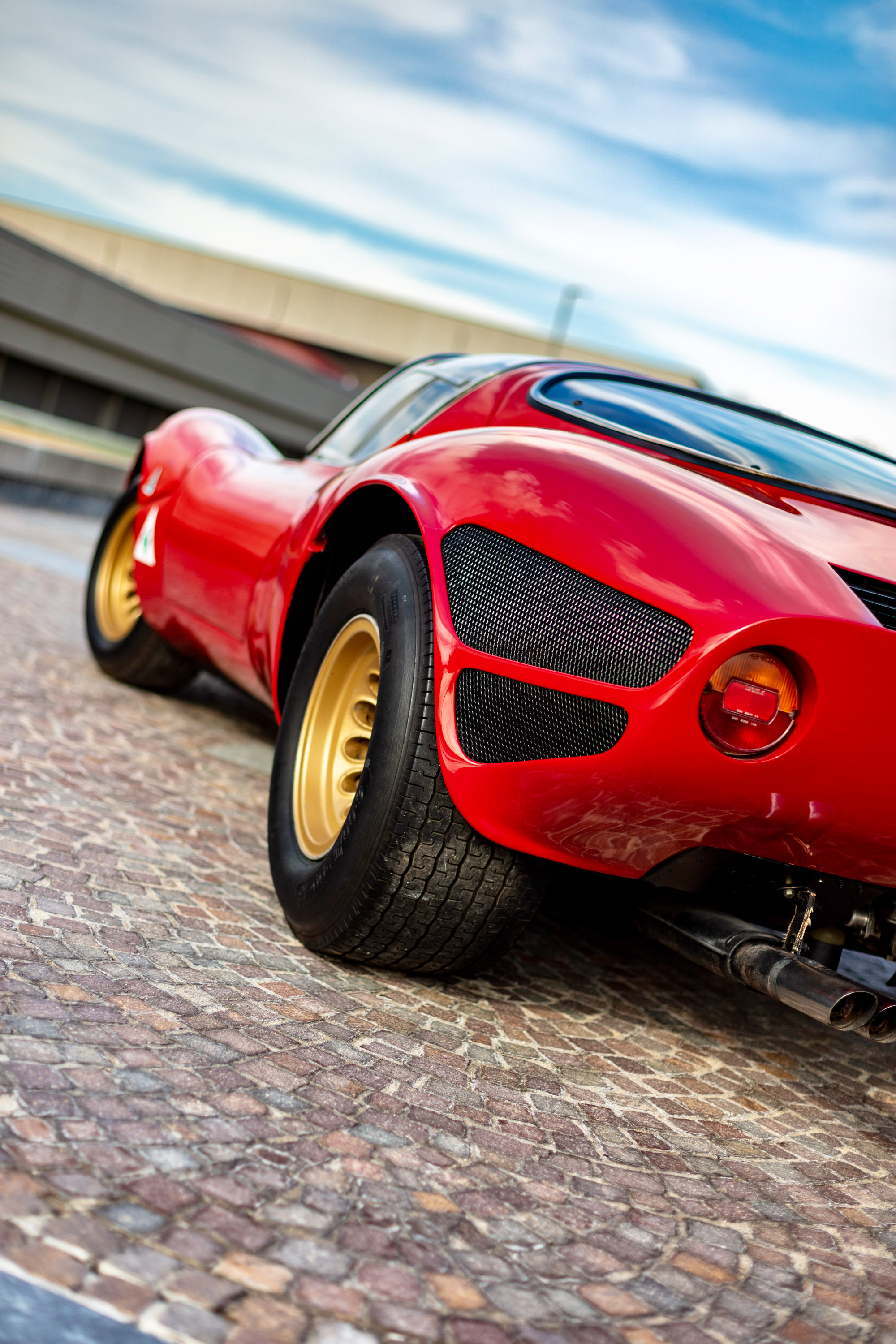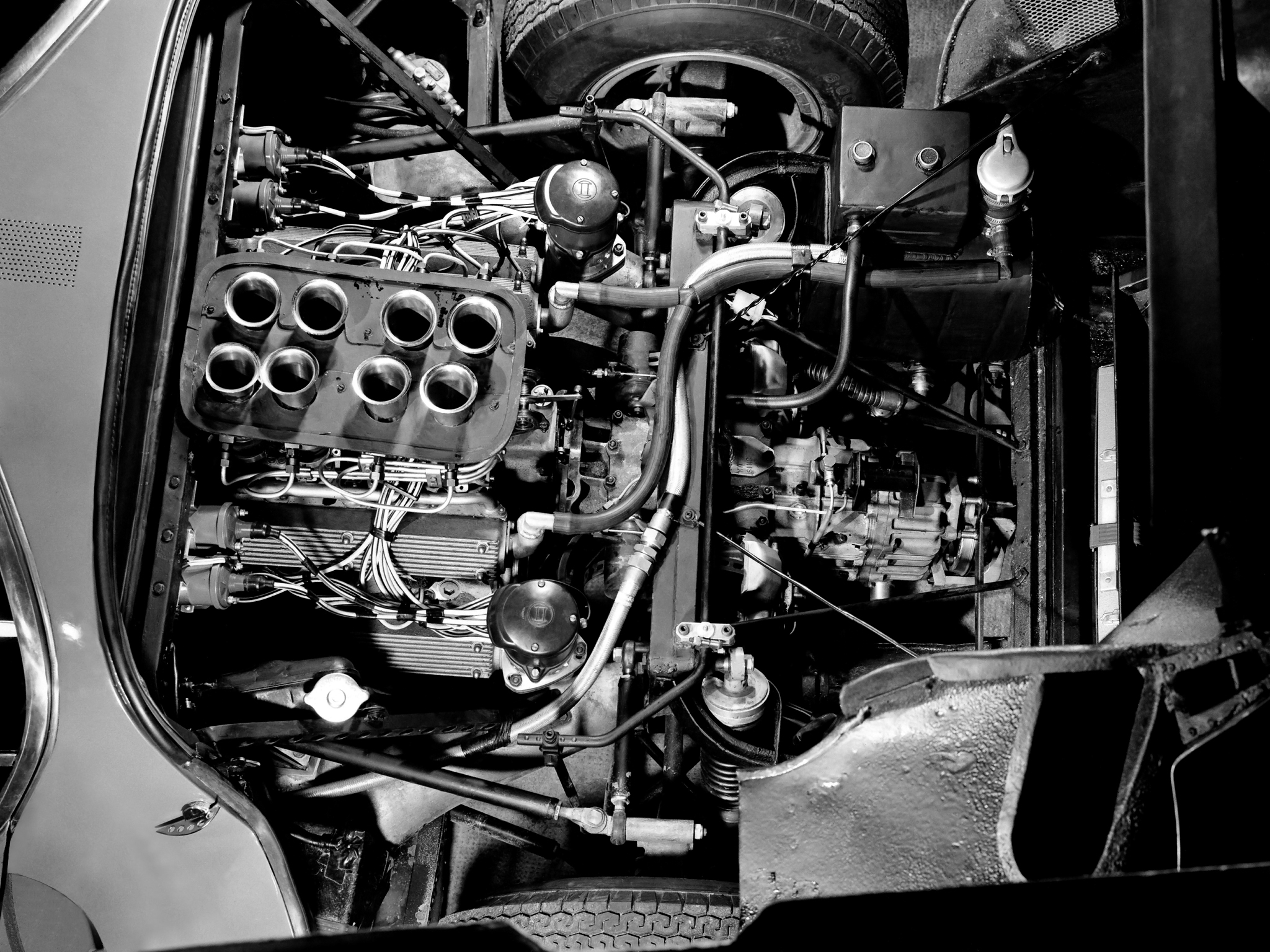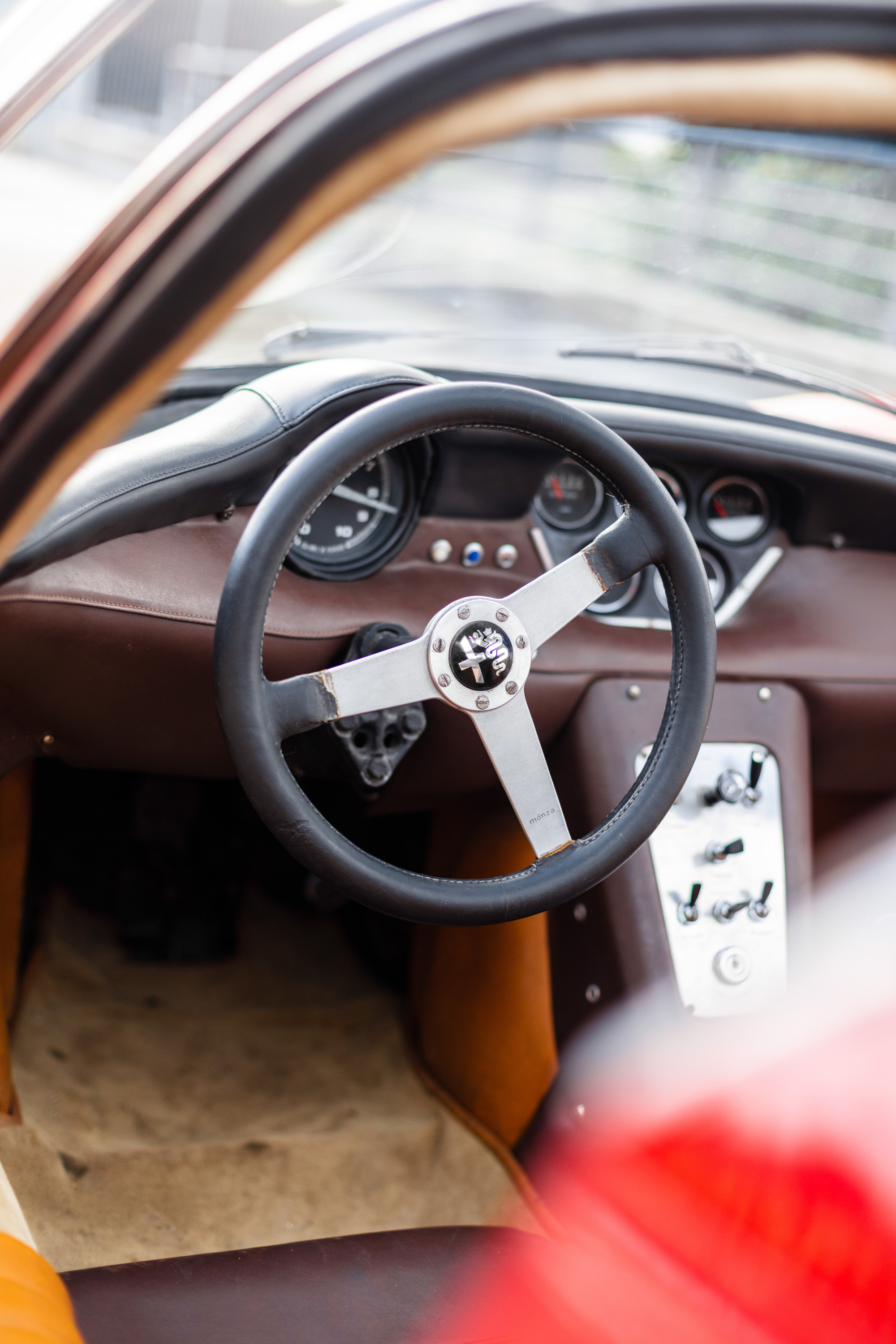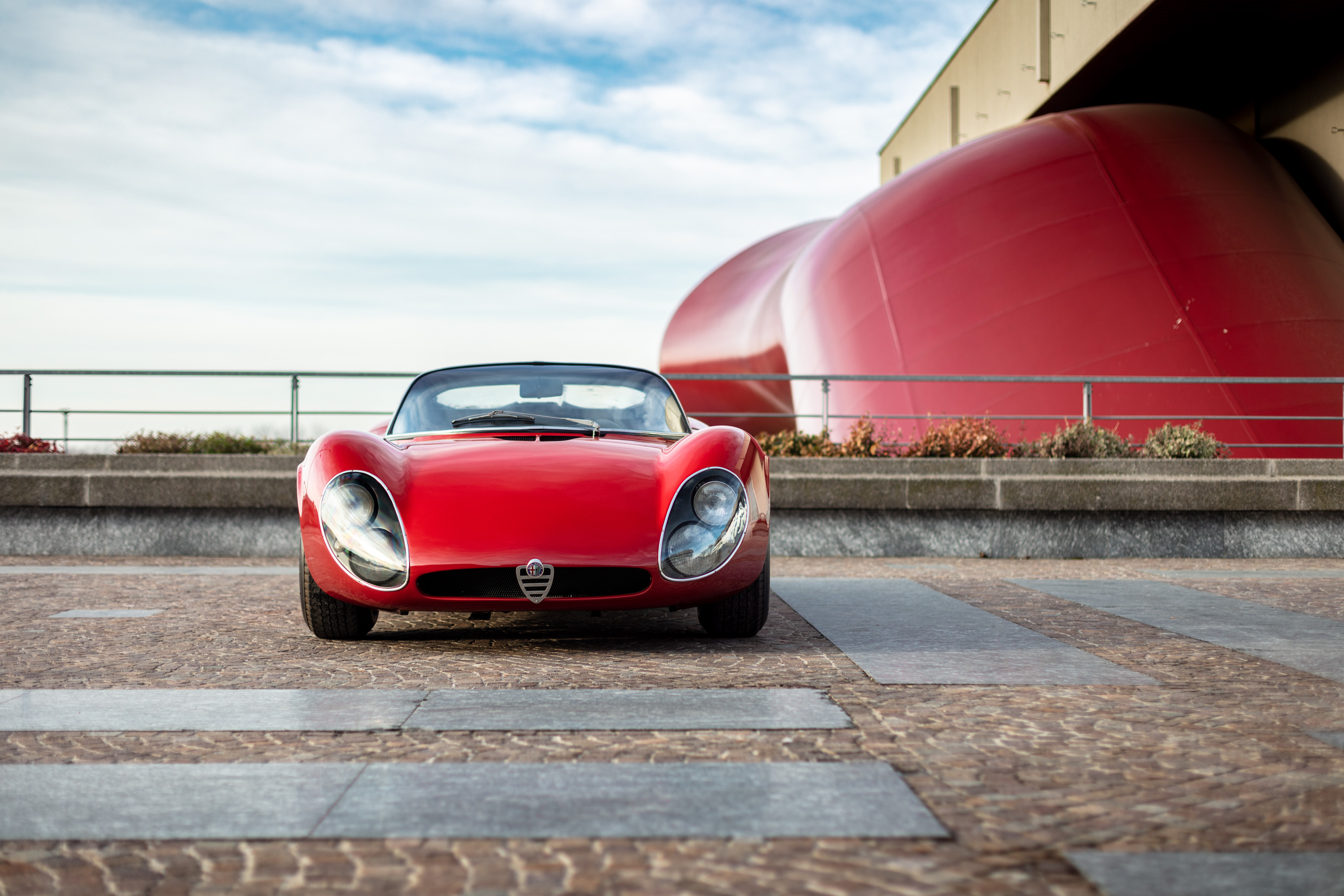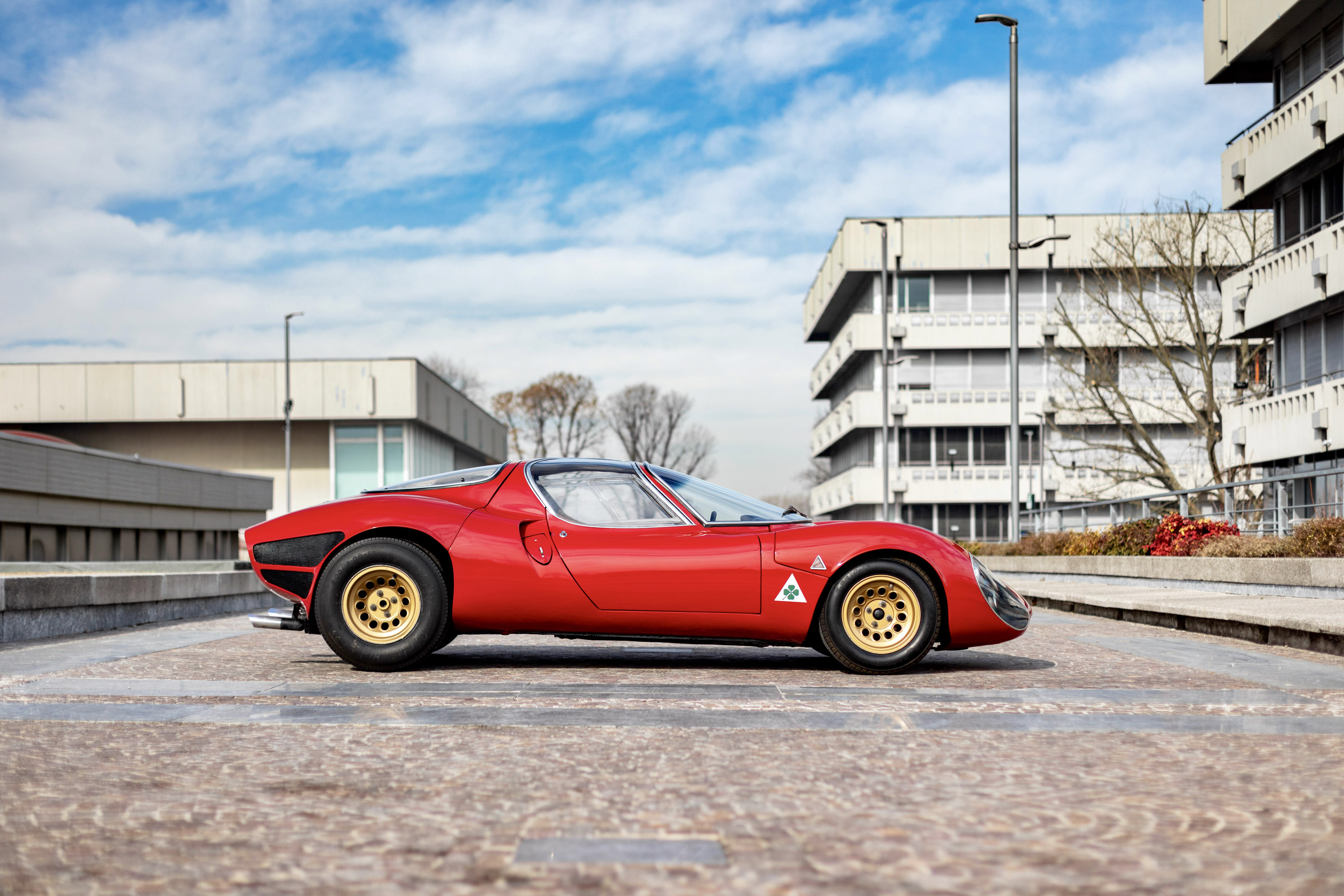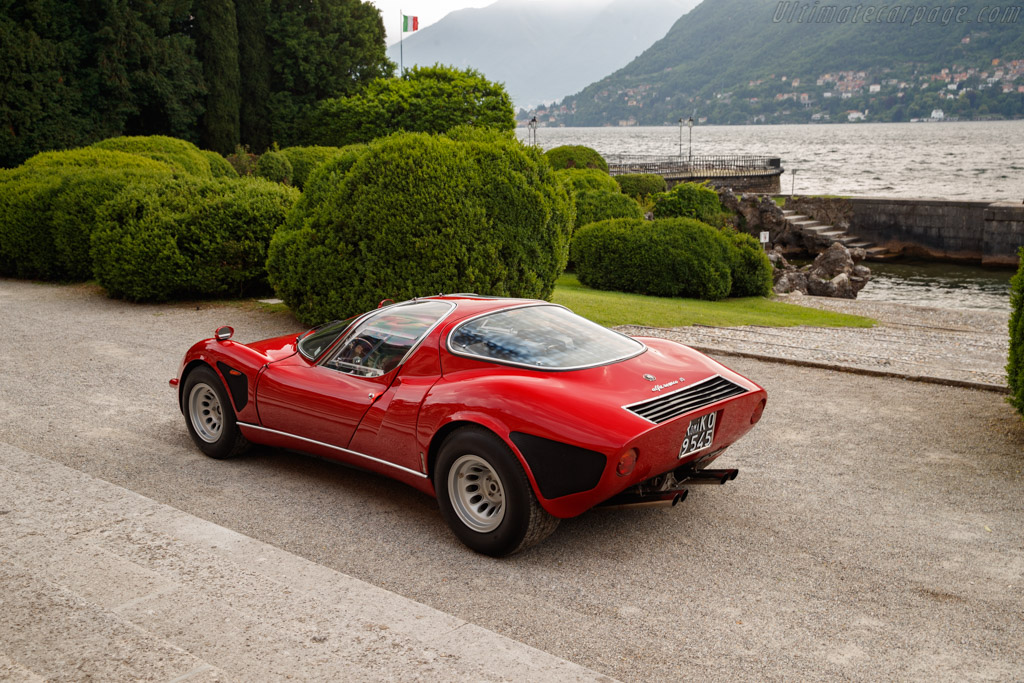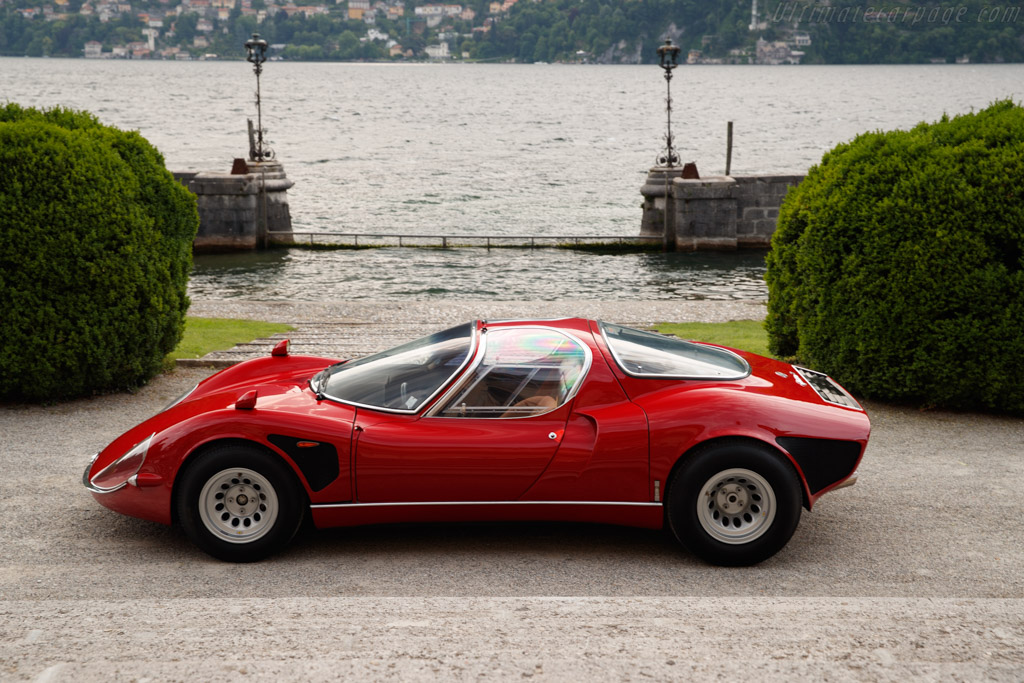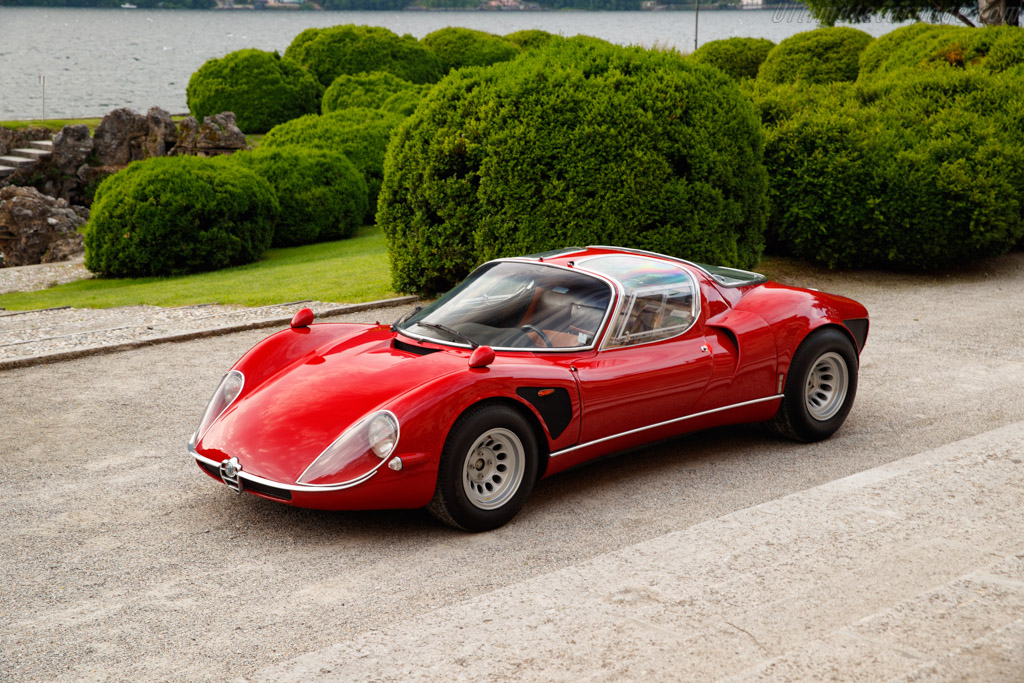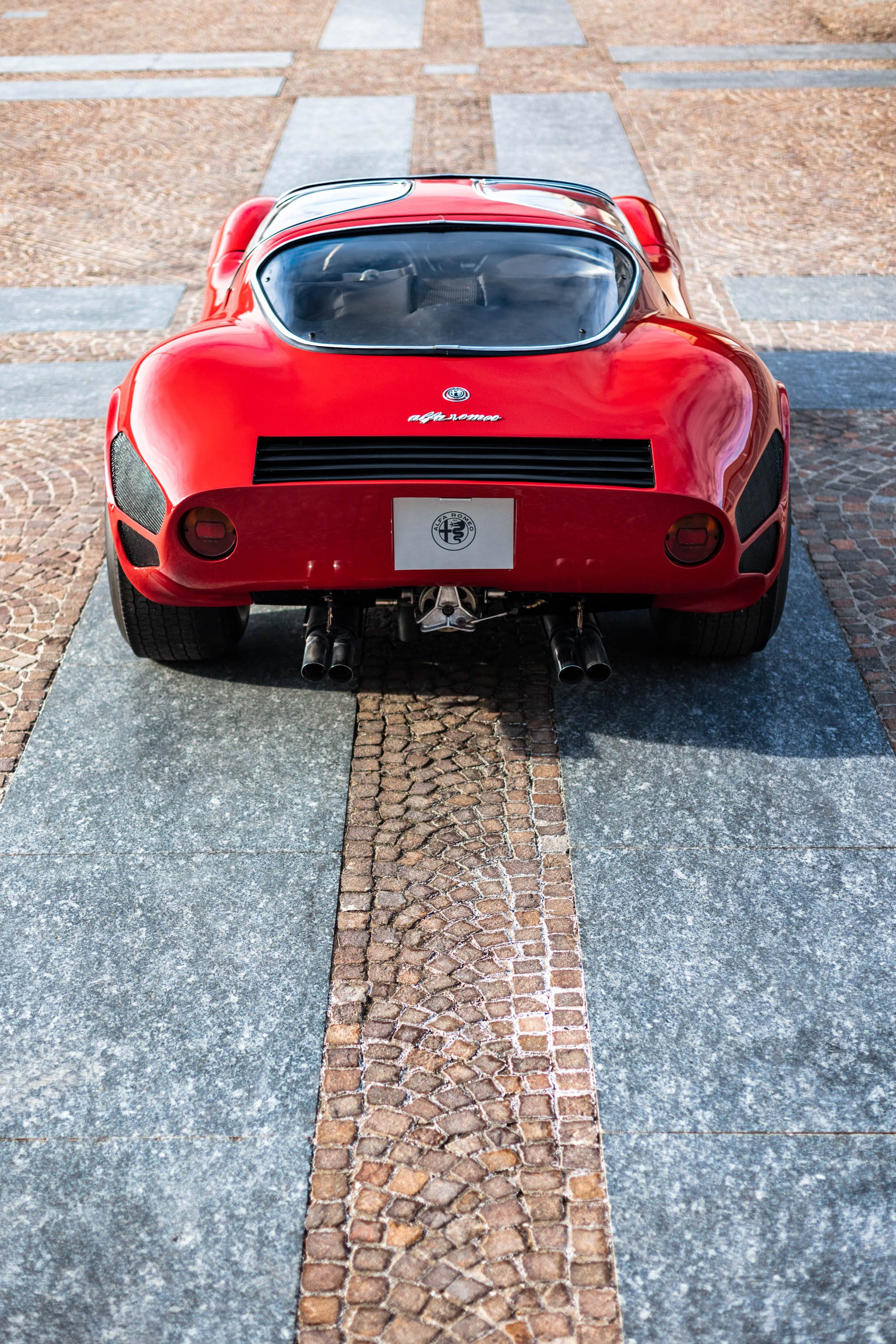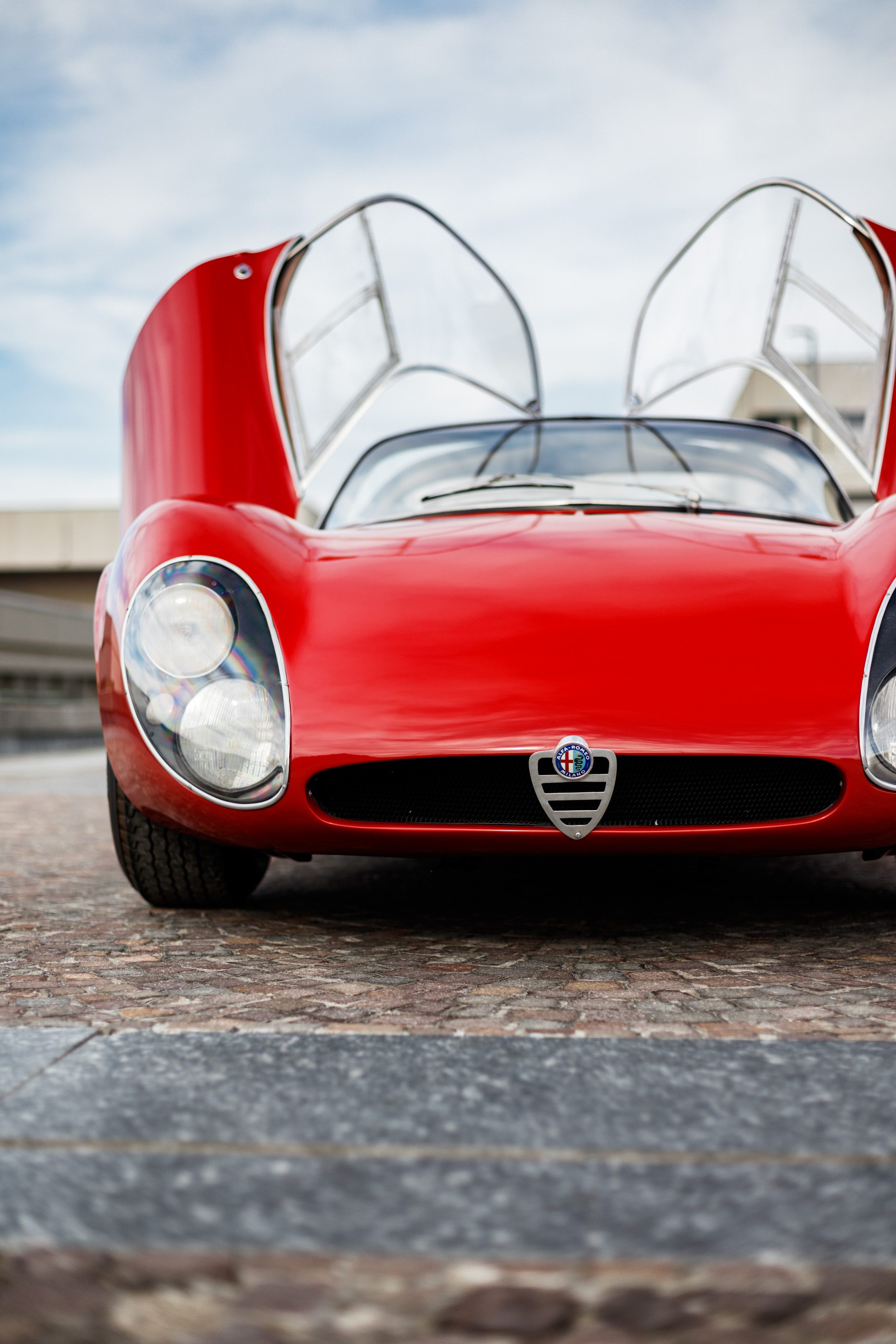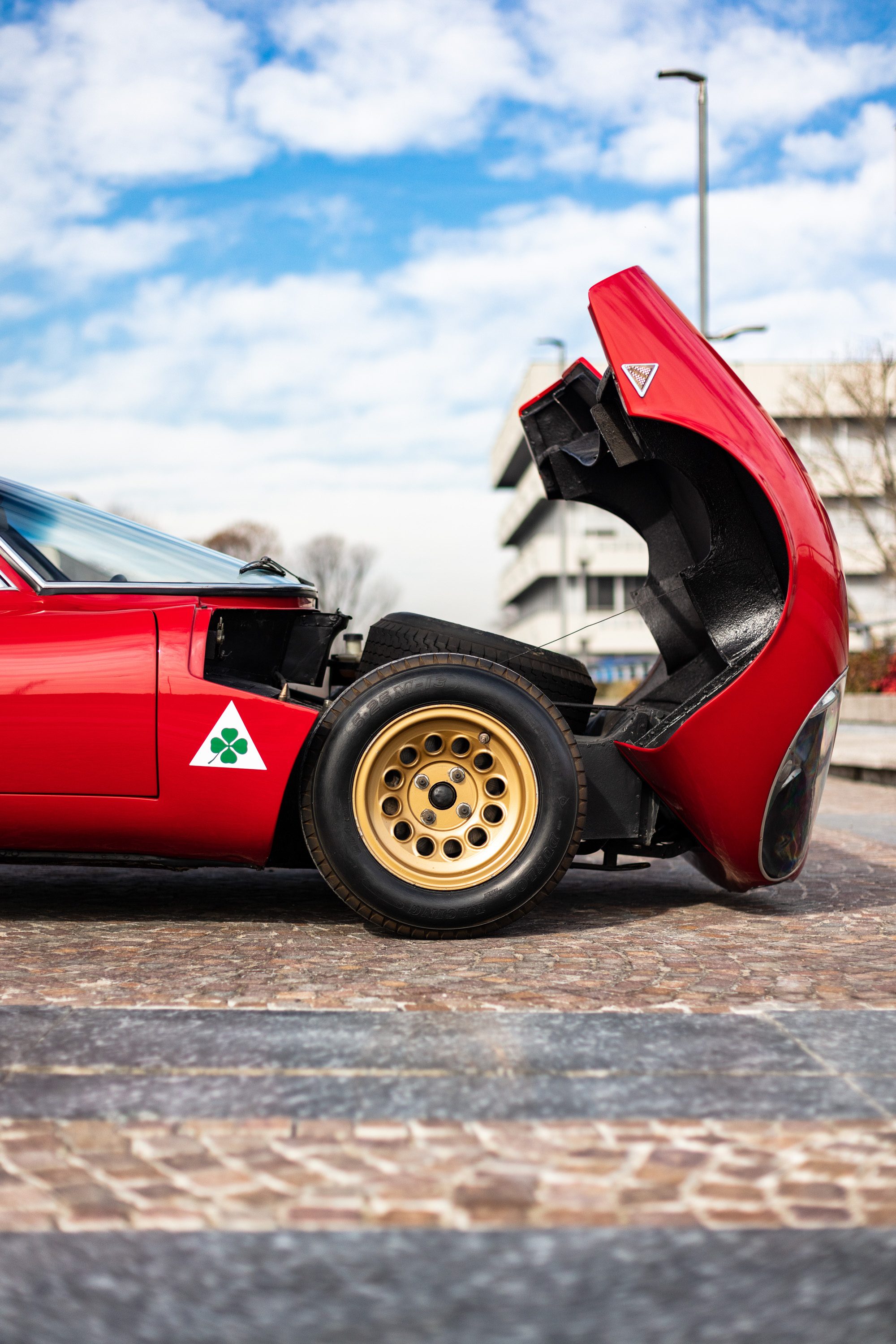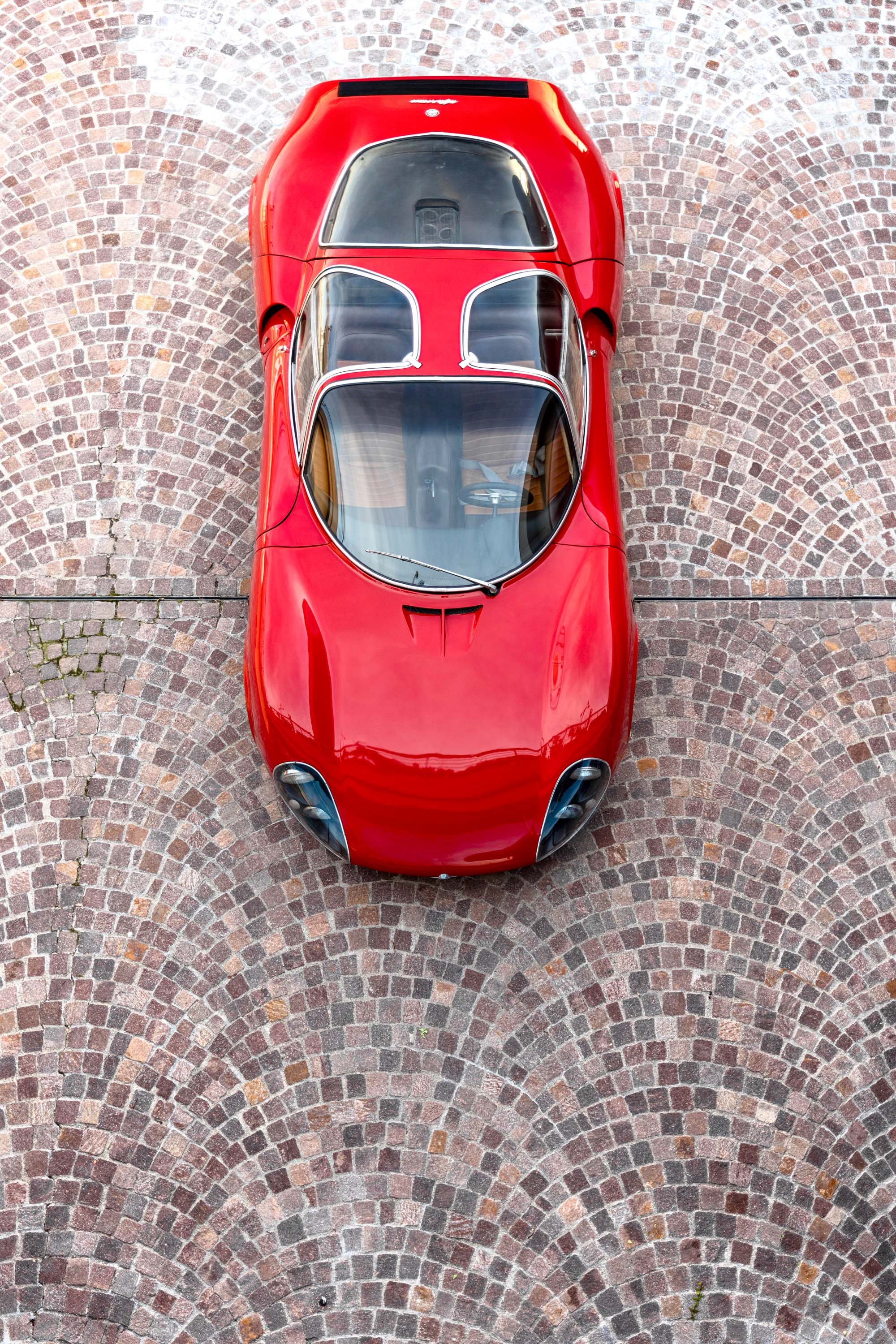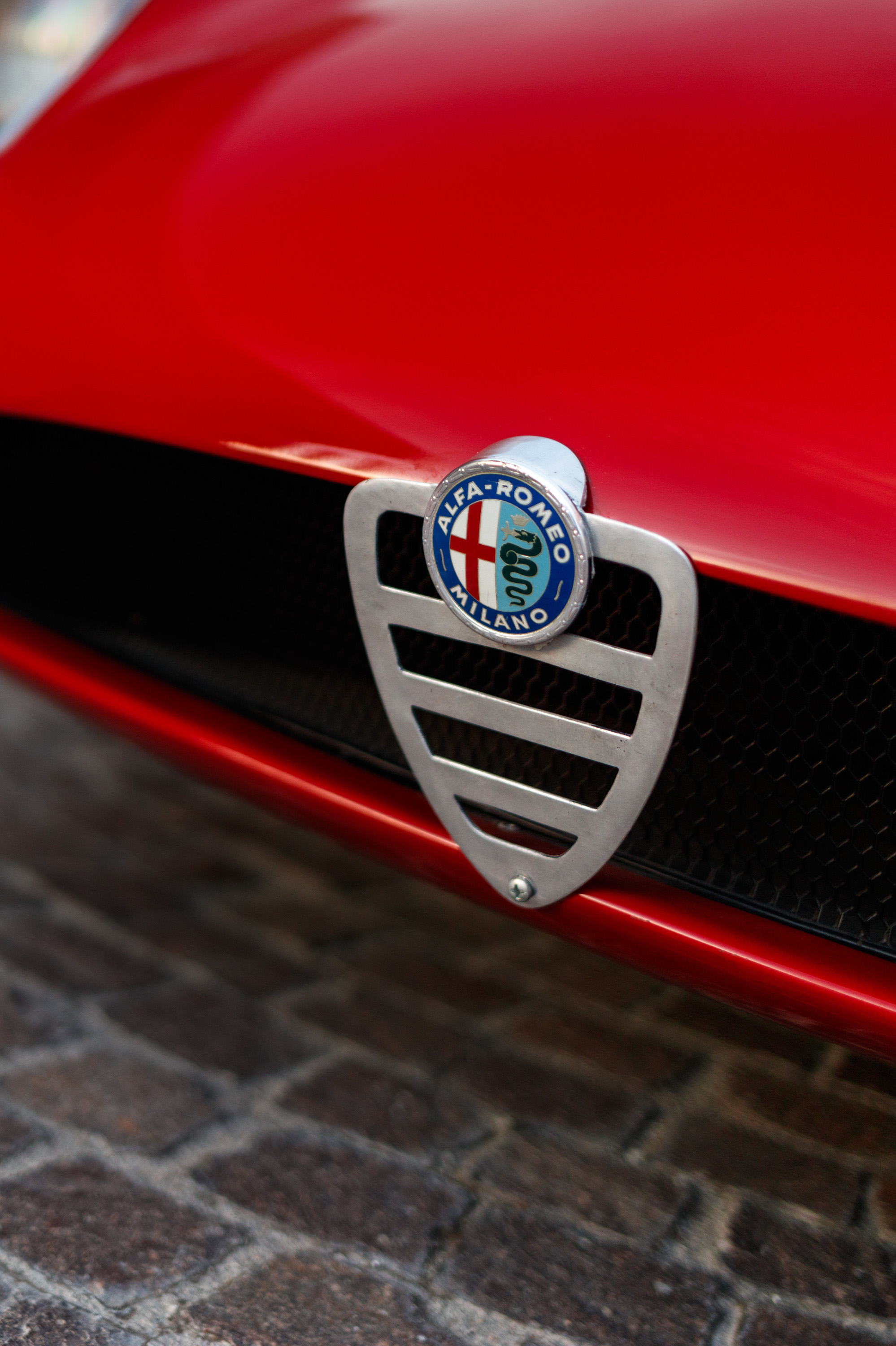
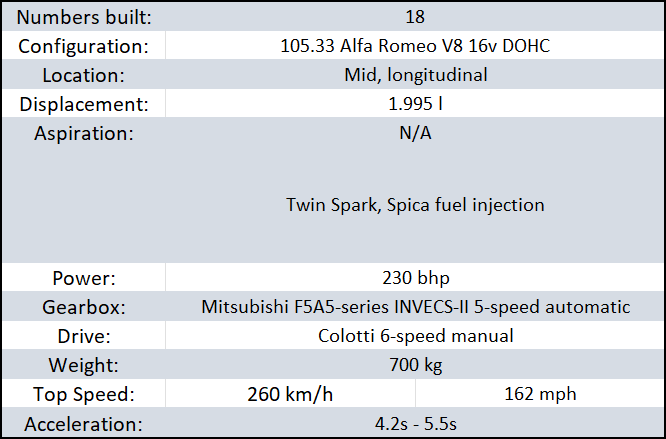
When we think of classic supercars of the ’60s,we usually think of such as Ferrari Dino, Lamborghini Miura, or even De Tomaso Mangusta. All mid-engined – but Alfa Romeo was different. The car introduced in 1967 was groundbreaking.
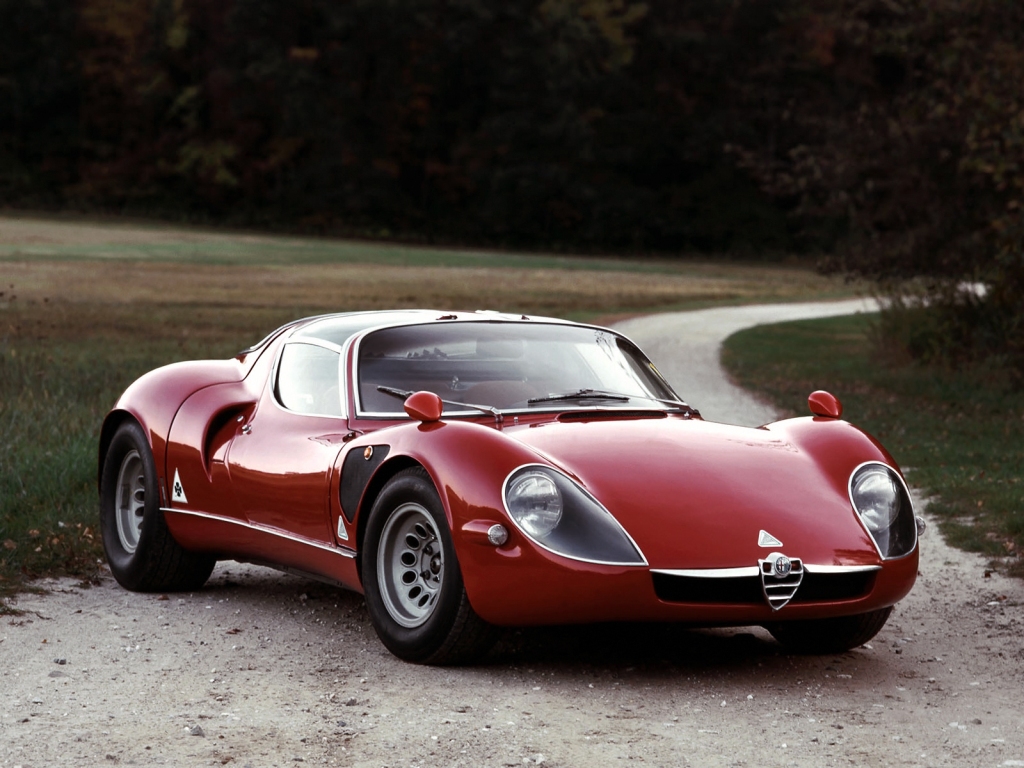
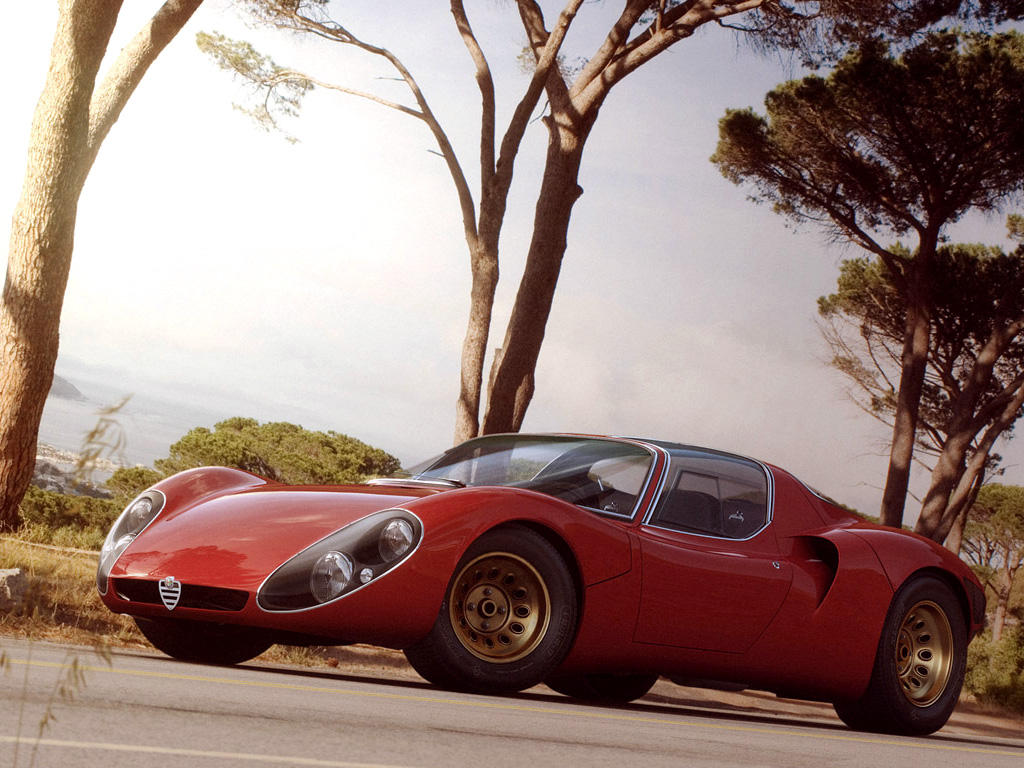
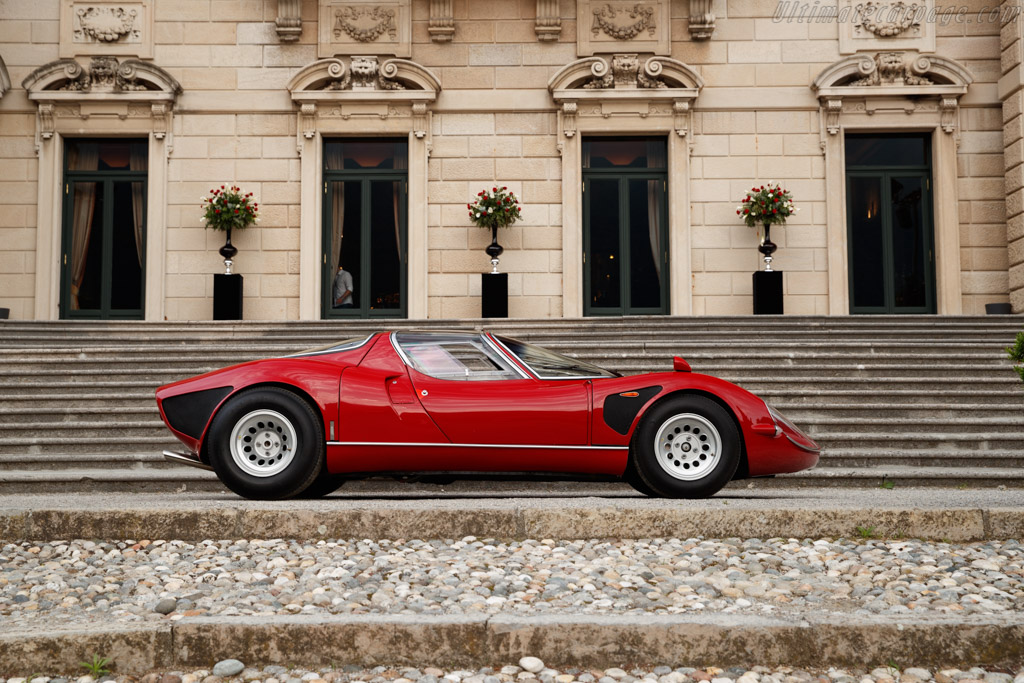
The history of Alfa Romeo can be split in two parts: the pre-war era and the post-war. Before World War II, Alfa Romeo focused on race domination, as well as high-speed sports cars production for customers to drive on public roads. Not much apart from that. After the war – under the influence of the Italian government – they shifted towards manufacturing cars for the masses. And even though they were supposed to be widely available, Italian vehicles were not devoid of emotion, sportiness or potential. The Giulietta SZ and Giulia GTV were highly acclaimed in the world of touring car races, but Alfa withdrew from Grand Prix after the year ’51 – a successful year, by the way, thanks to the Alfetta 159. They left undefeated and focused on production models for the roads, however… their lineup was lacking a true supercar. That’s why Alfa Romeo race division – Autodelta – launched a new project in the ’60s. Their Tipo 33 was created with Le Mans endurance racing in mind, and the Stradale variant was its road-going derivative.
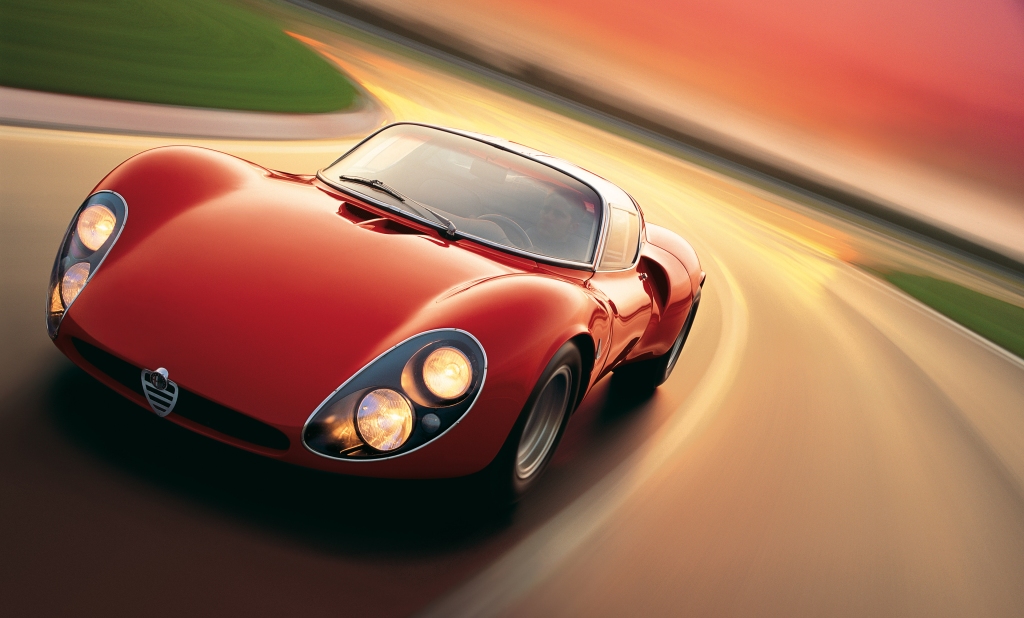
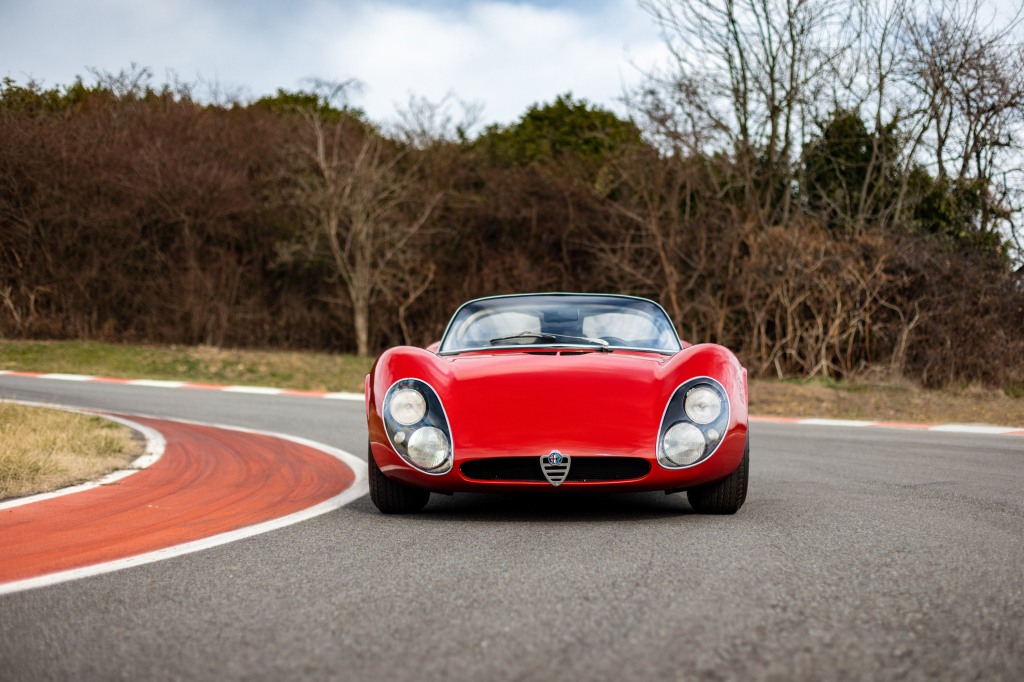

Autodelta was a smart selection of high quality Italian engineers, handpicked by Carlo Chiti himself. Chiti was an ex-Ferrari, with a career in ATS following the schism with Enzo. He had experience with Alfa Romeo, focusing his efforts on motorsport. Chiti was a great man – not only because fat – and for his new project, he enlisted some of the high-level individuals. Such as Giuseppe Busso, responsible for building racing engines, Orazio Satta Puliga from Alfa Romeo motorsport section, Giuseppe Luraghi – not only a poet and a lyricist, but also a talented mechanic, and at that time – the head of Alfa Romeo. Such roster guaranteed success. This, in short, is what Autodelta was. It was not Alfa Romeo, but Autodelta, that took the lead in the development of the new supercar. Alfa gave it away reluctantly, but Luraghi, as the boss of both groups, flawlessly navigated the project and avoided any conflicts.
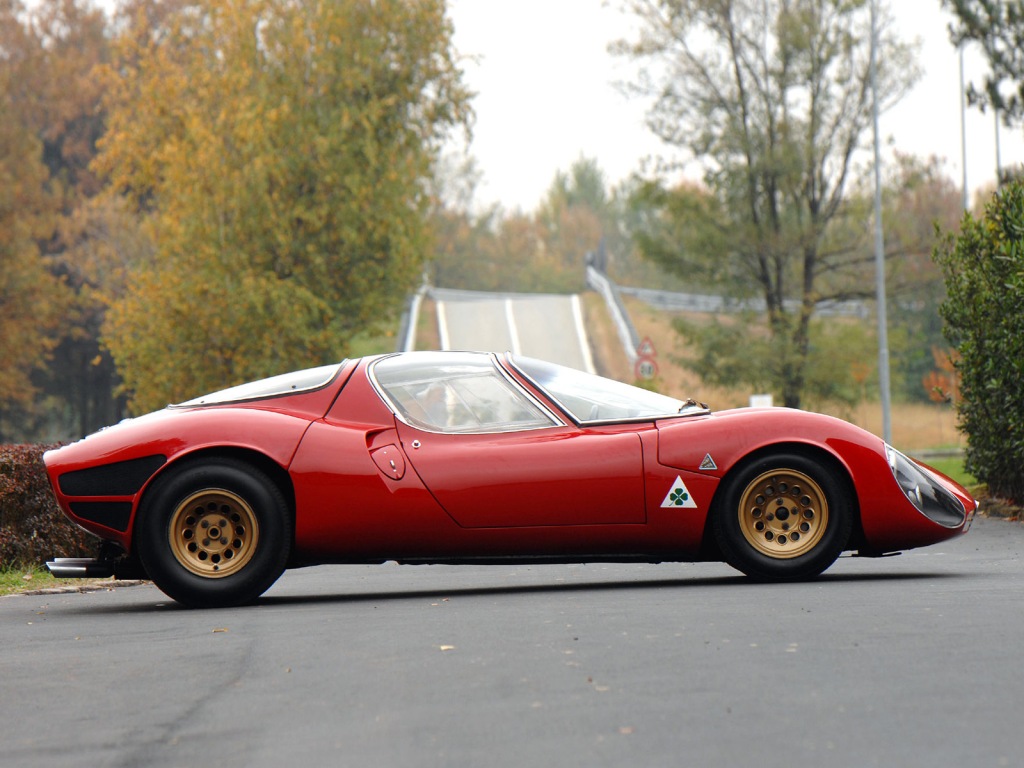
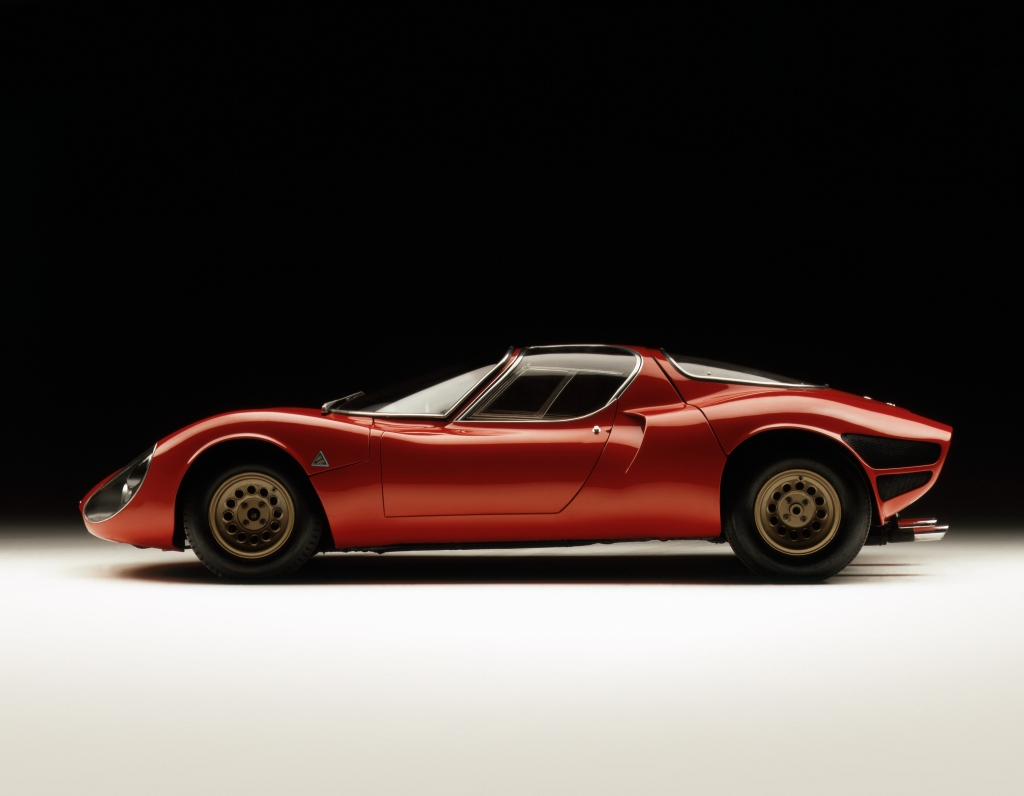
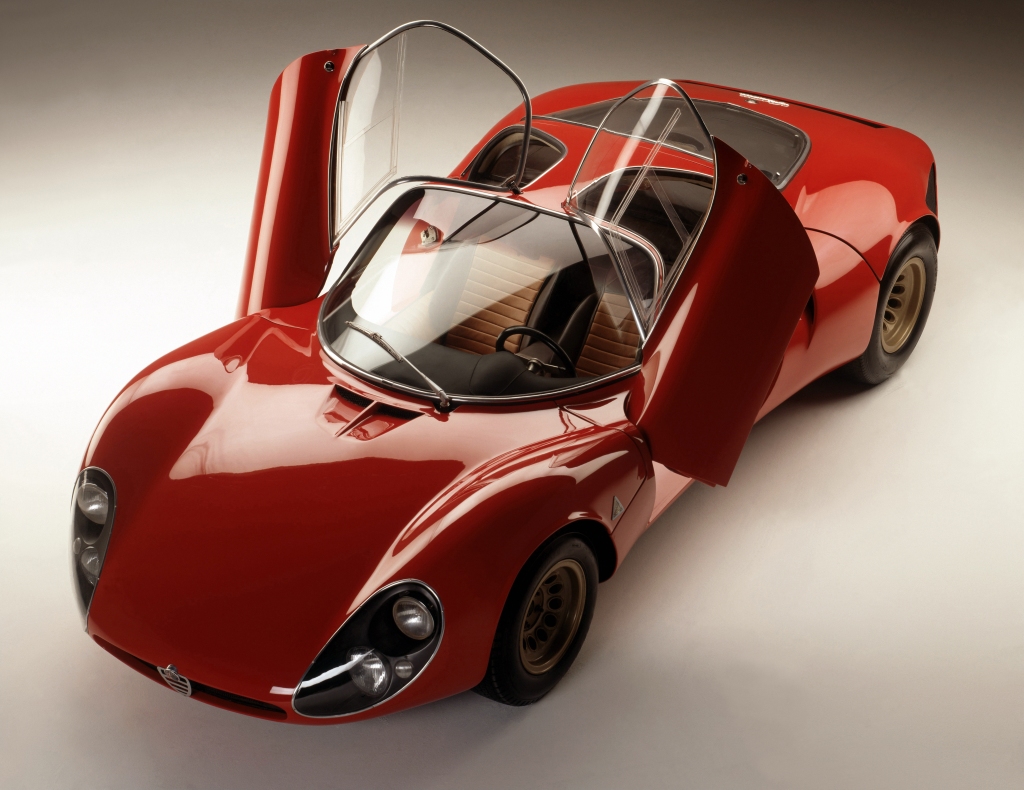
33 Stradale timeless body line is considered one of the most beautiful in automotive history. Franco Scaglione designed a wedge-shaped body, similar to the Ferrari Dino or Lamborghini Miura, very typical of that era – with a narrow nose harmonically flowing into a wavy flank. Far more daring than Gandini or Fioravanti designs, with upward-swinging dihedral doors, opening diagonally – as if both forward and upward at the same time. McLaren later incorporated something similar into their F1 model… A glass-enclosed cabin resembling a capsule or a bubble – with a Targa-style bar. All the while, it maintains magnificent proportions and everything harmonizes with the attractive body line. Something truly splendid.
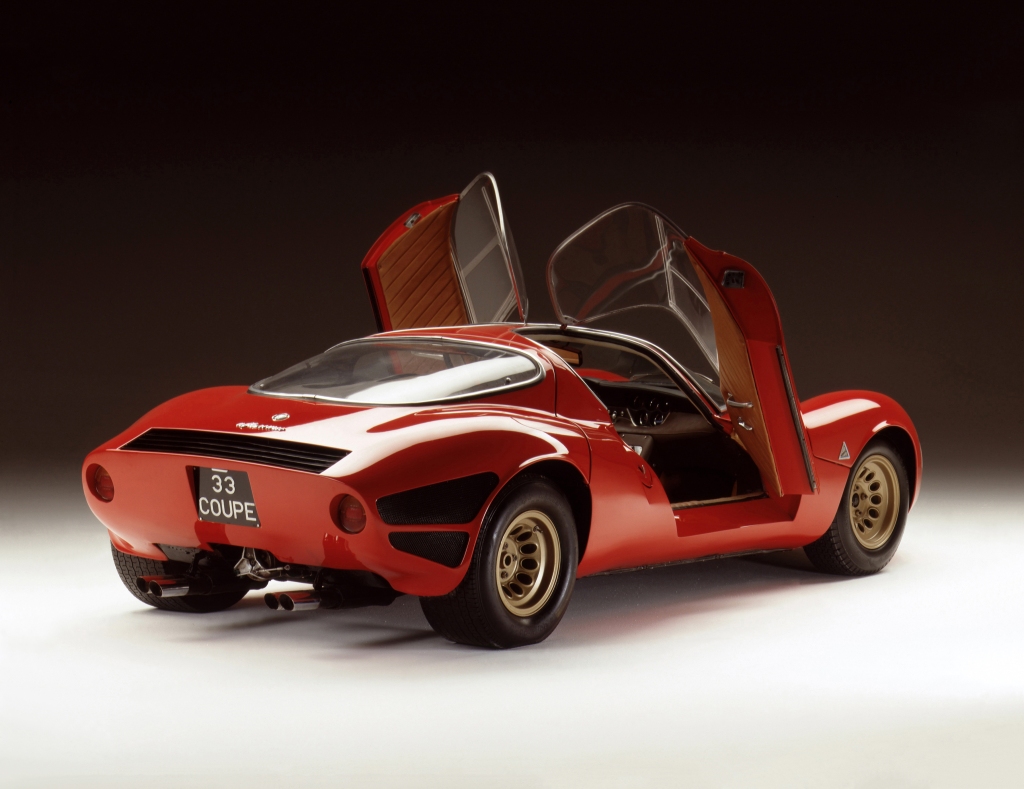
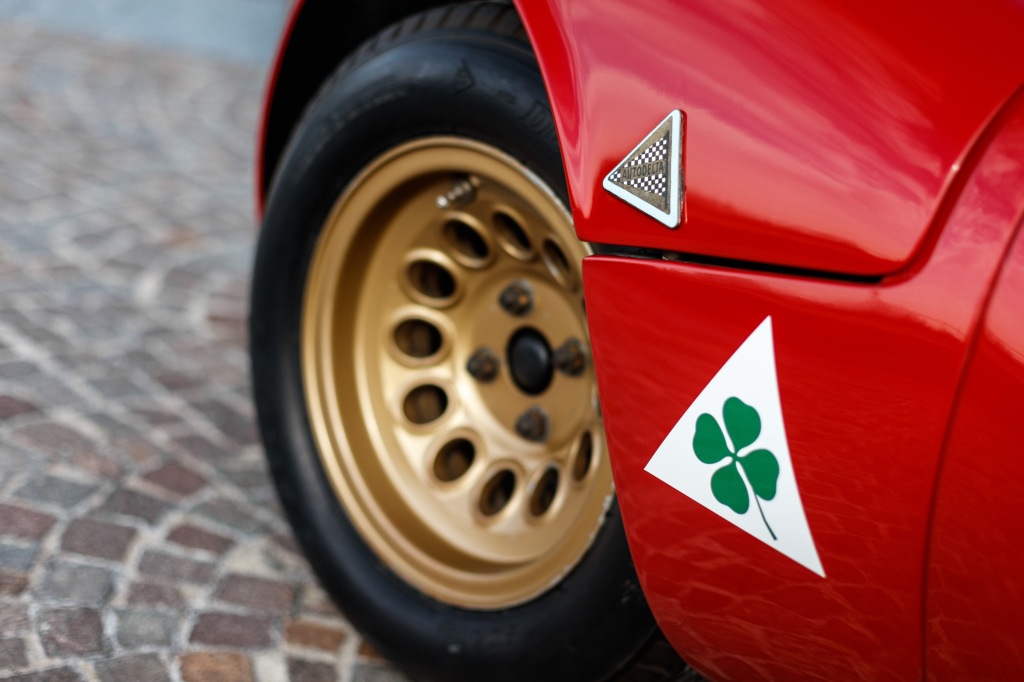
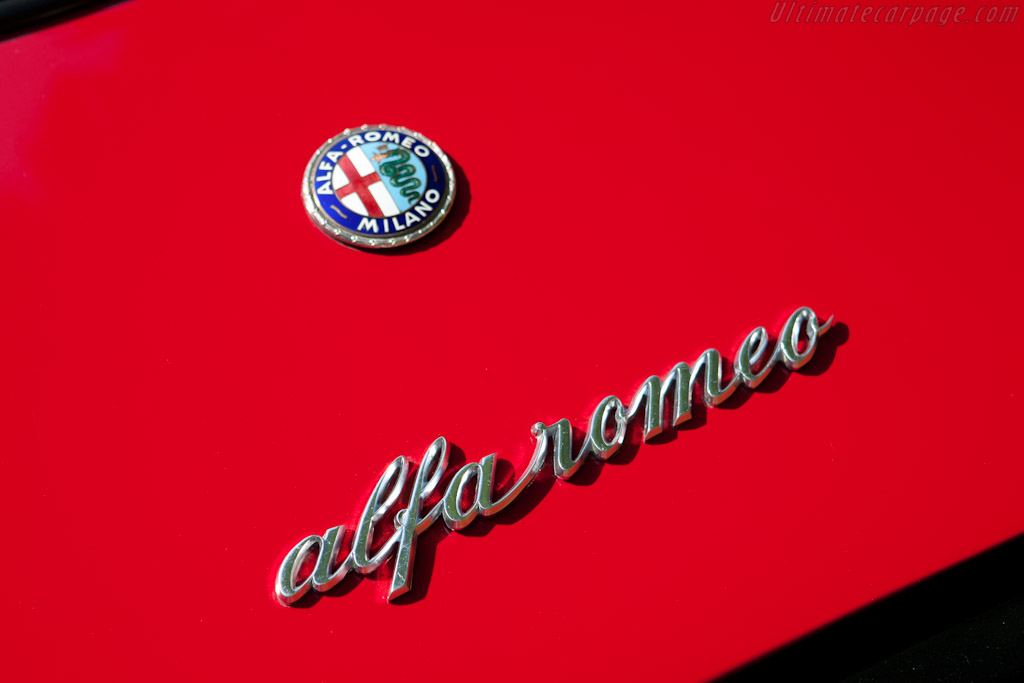
Racing Tipo 33 weighed no more than 575 kg. The road variant was heavier, but it was still 700 kilos max. This is because the car sits on an aluminum frame, and the body is made of fiberglass-reinforced plastic. The chassis was made of three thick tubes, two on the sides and one that connects them in the shape of an „H”, between the engine and the driver compartment. And that’s essentially the whole platform – those three tubes, nothing else… The longitudinal subframe in the rear section was angled inwards. It housed the gearbox and the engine itself. Rubber fuel tanks were hidden inside the tubular elements on the sides. For better comfort, the wheelbase of the road model was increased by a full 10 cm compared to the track versions. Its racing suspension was a fully independent system with double wishbones at each corner – although some aluminum components were replaced with steel for greater rigidity – and braking power was provided by Girling disc brakes, for the first time from this manufacturer: ventilated.
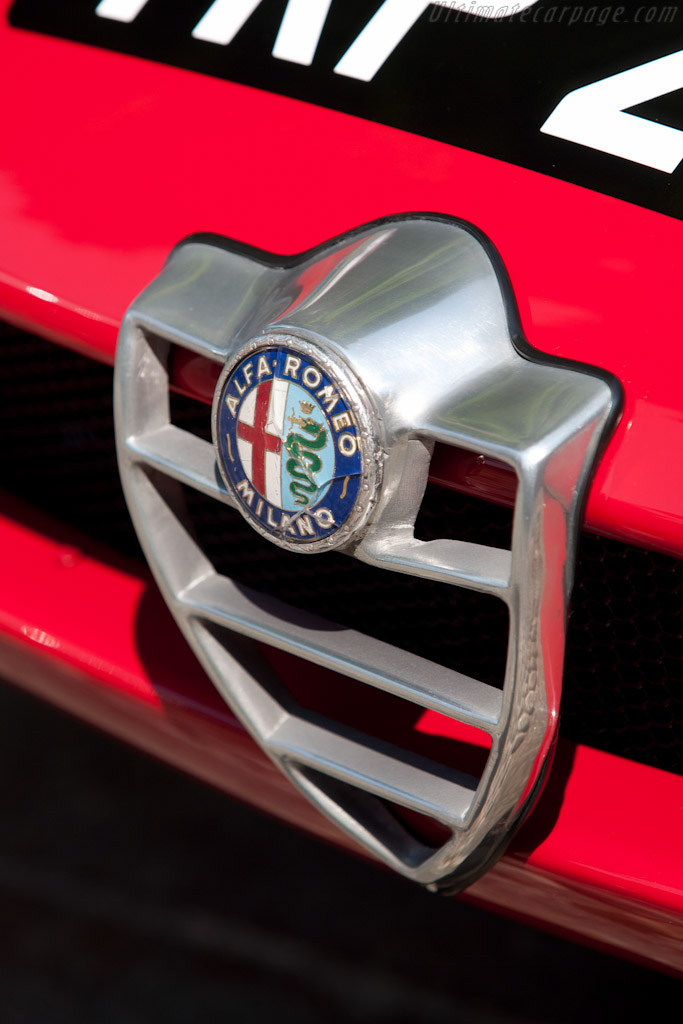
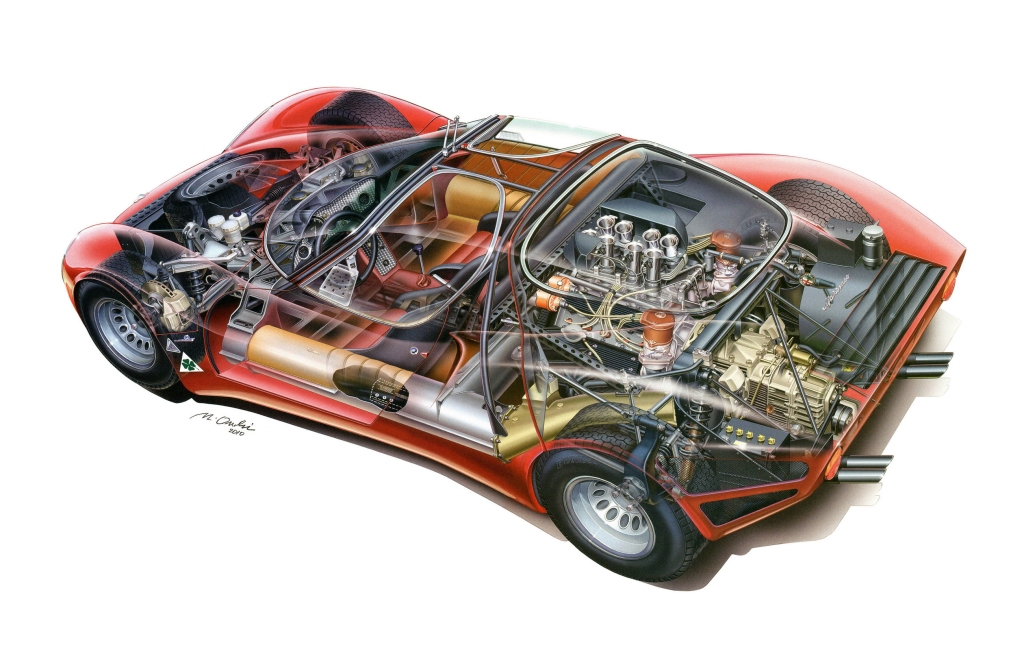
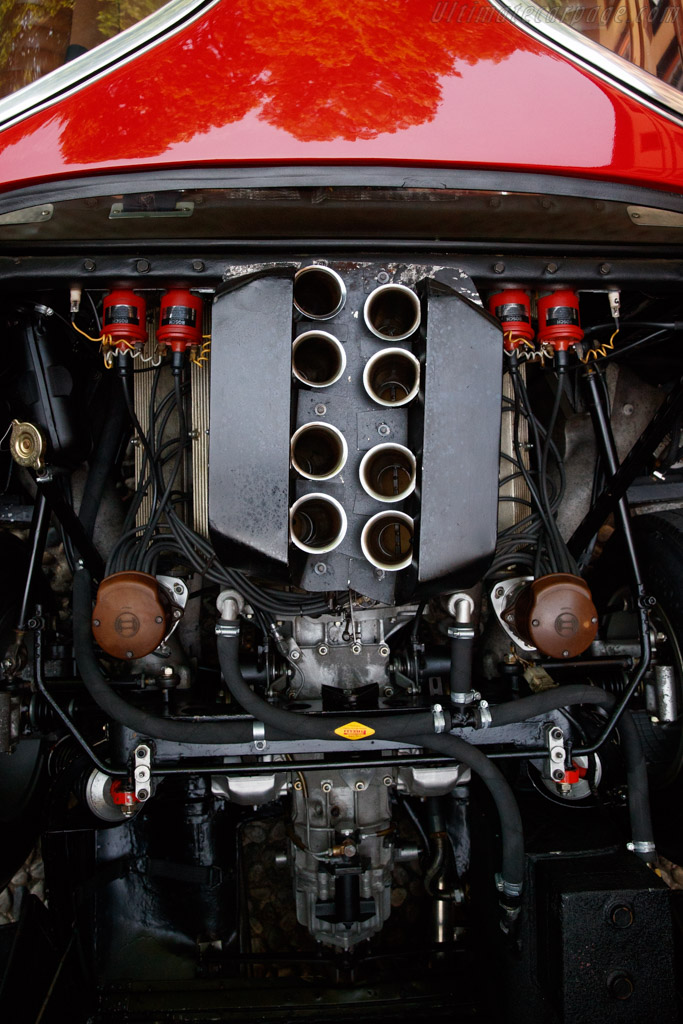
Until the release of the 4C model in 2013 – 33 Stradale was the only mid-engine road car from Alfa Romeo. This lightweight alloy powertrain, was a V8 mounted longitudinally behind the driver’s cabin – powering the rear axle through a 6-speed fully synchronized gearbox. The V8 itself is a technology motorsport-derived technology, featuring a dry sump, wide cylinders with a reduced stroke, which was so specific of Alfa Romeo race cars: two spark plugs per cylinder. While the original had carburetors, this one had mechanical injection and a high compression ratio. Essentially, it was the same system used in racing – just tuned down to keep it in check. The capacity… was small – just enough to fit within the competition regulations. But from 2 liters, it easily produced 230 horsepower, and the engine revved up to nearly 10,000 RPM without stress. This is the road-going version! The track-oriented examples delivered 270 horsepower. That’s 115 horsepower per liter in a naturally aspirated setup.
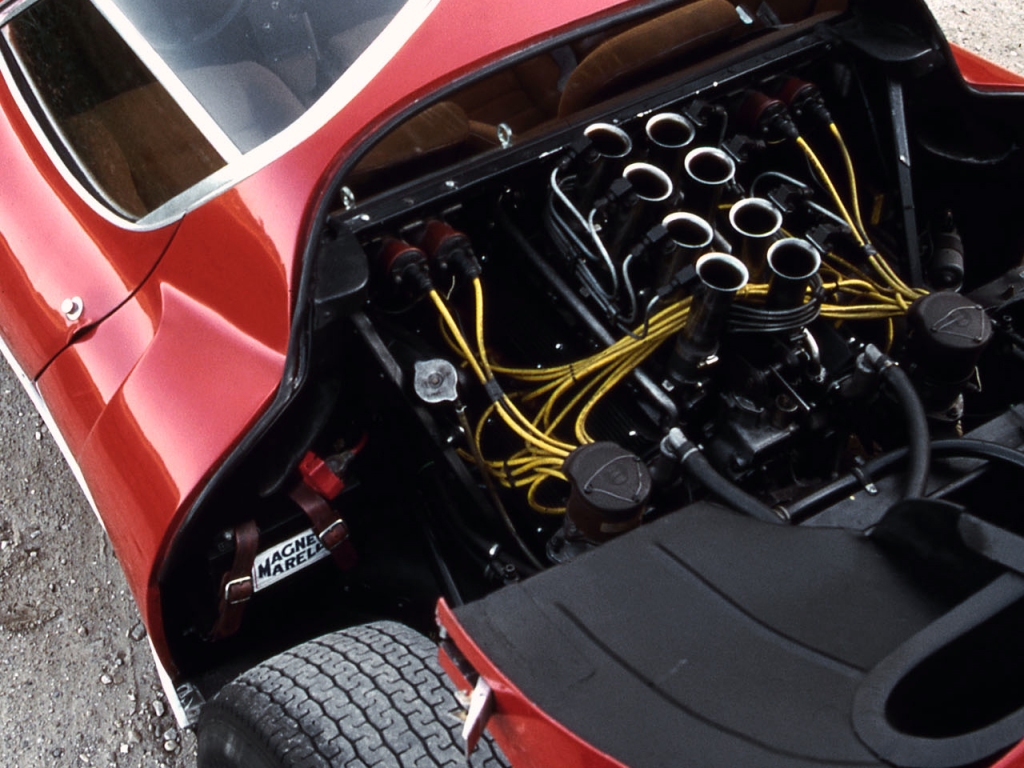
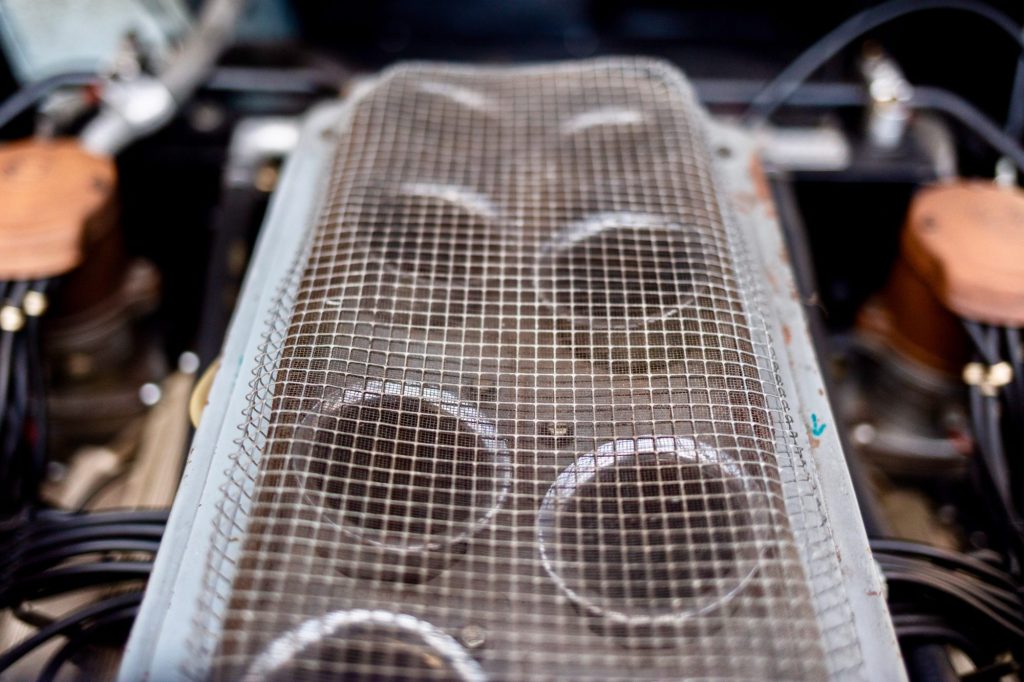
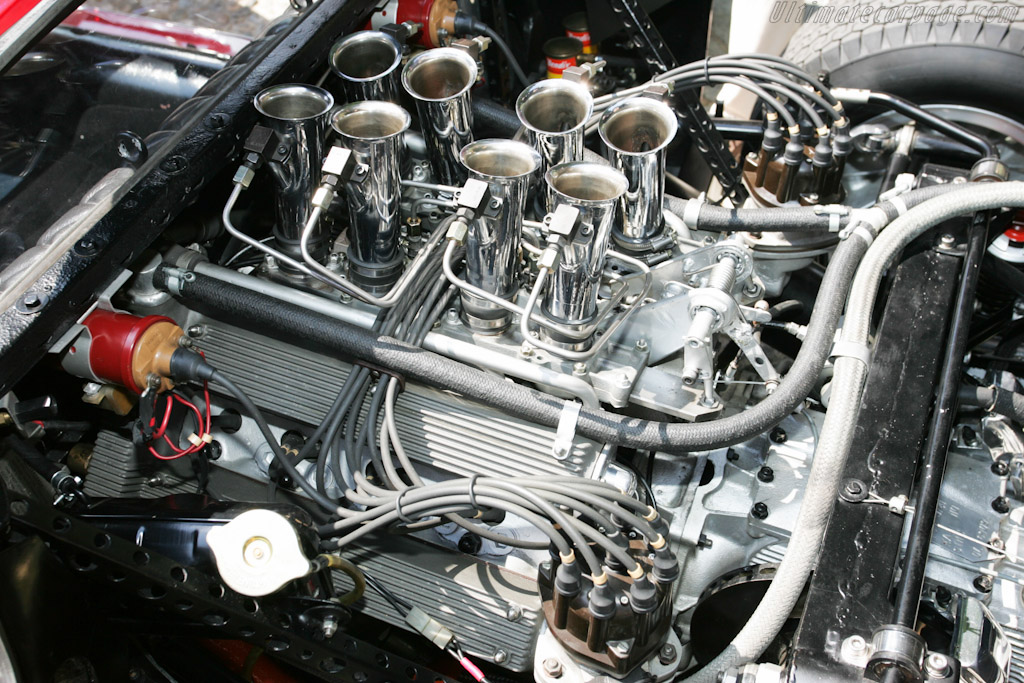
With a top speed of 162 mph, the Alfa Romeo positioned itself directly in the supercar segment. However, it couldn’t quite compete with the very best. The Daytona V12 boasted 350 horses, allowing it to reach higher speeds (around 174 mph). But that came from a 4.4-liter engine. Alfa, on the other hand, was light, and its strength lay in acceleration. Even a good time, around 5.5 seconds (or even better, depending on the source), couldn’t compensate for handling characteristics that fell short. Moreover, the V8 could be a let-down. It was not the best powertrain Autodelta made – let’s put it this way. The biggest mistake, though, was the price tag. No wonder the Alfa didn’t sell well.
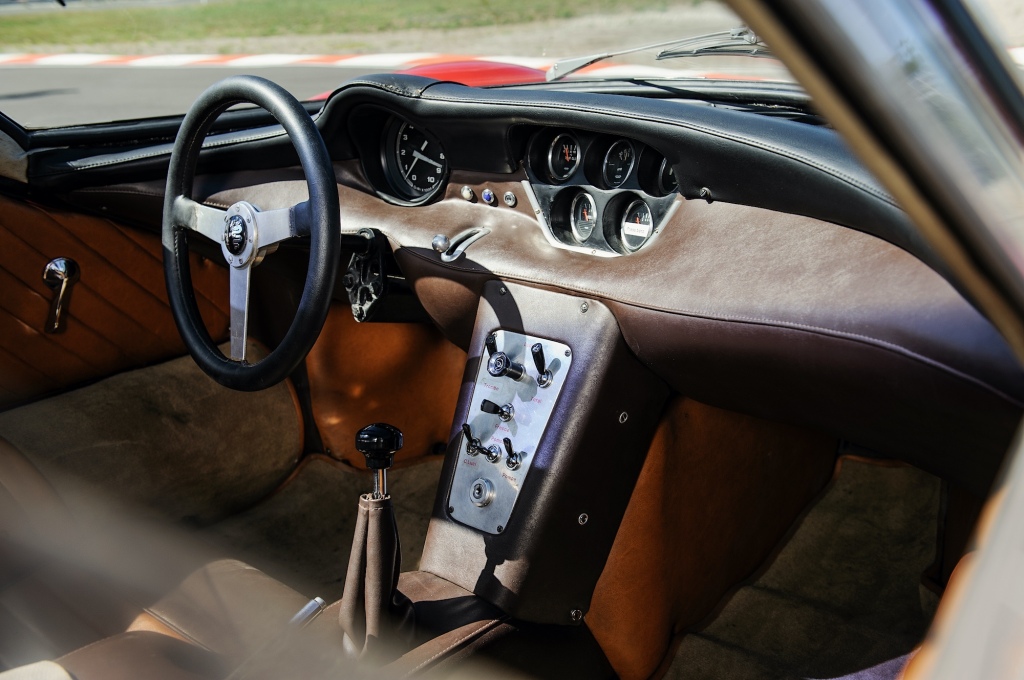
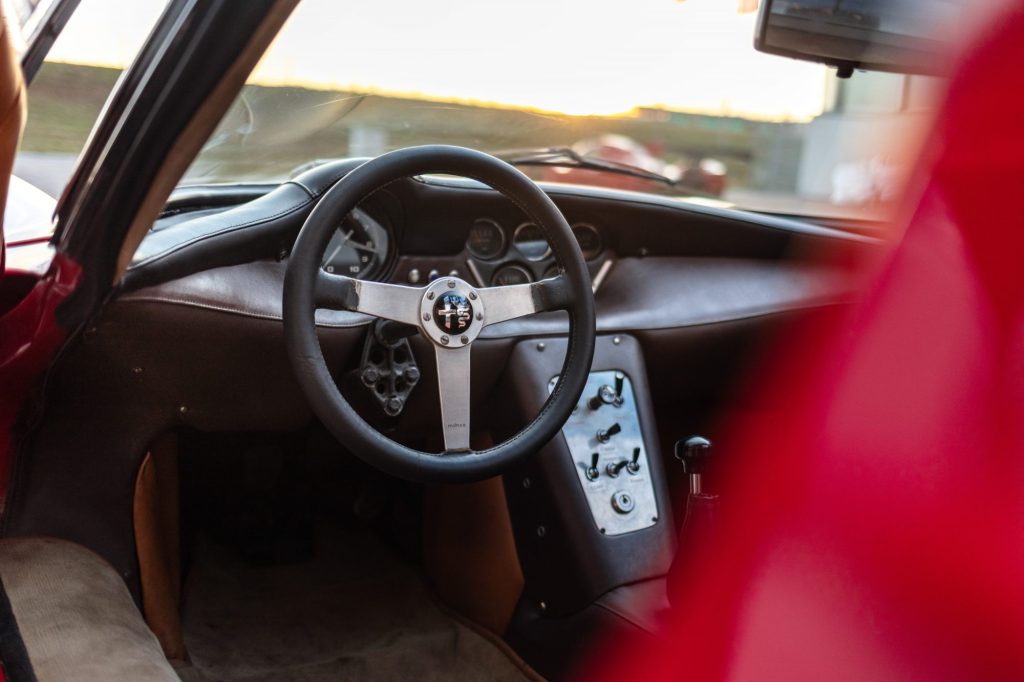
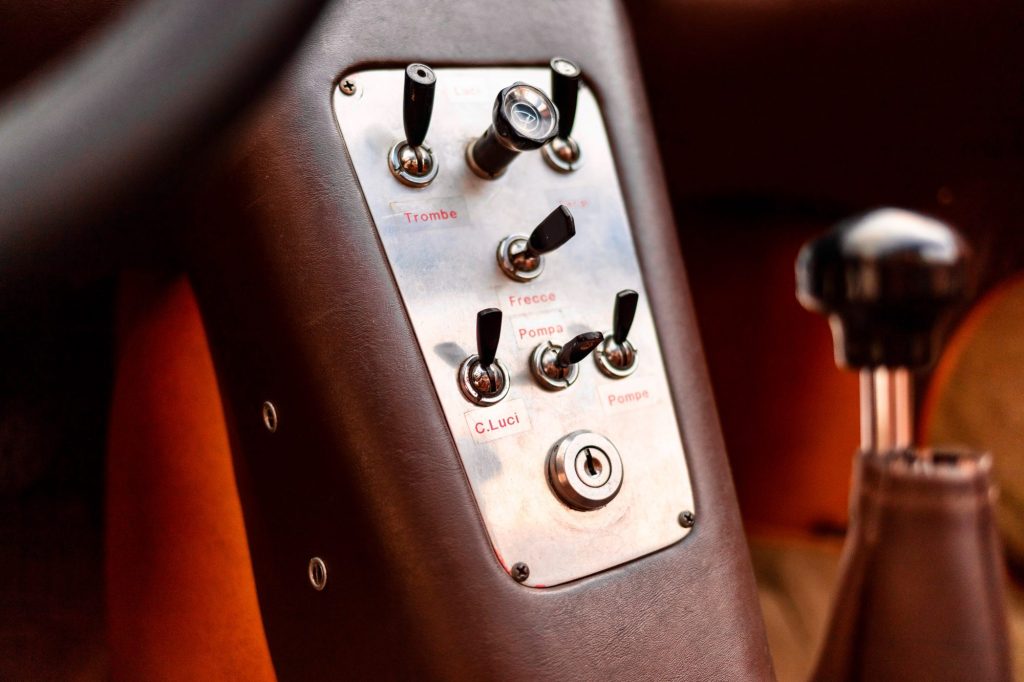
The car was first shown to the public at the Monza Motor Show in 1967, and it was officially announced at the Turin Motor Show later that year – boasting a pure sports lineage, yet it was a full-fledged supercar. It met all the criteria for it – ticked all the boxes. It was fast, indeed – but also exclusive, and luxuriously appointed (or perhaps more accurately: finished). Each unit was crafted by hand, and no two are alike. Early models had twin headlights, which were eventually replaced with regulation compliant singles. At some point, air intakes for brake cooling were added. One of the Tipo 33 units had some magnesium parts made for racing. The rims were entirely cast from aluminum. That wheel model is called Campagnolo – and they still make an impression today. Franco Scaglione once again proved he was the top of the top designers in automotive history. The Alfa Romeo’s lines strike a perfect balance between elegance and innovation. Moreover, the silhouette itself is well thought out and beneficial in terms of performance.
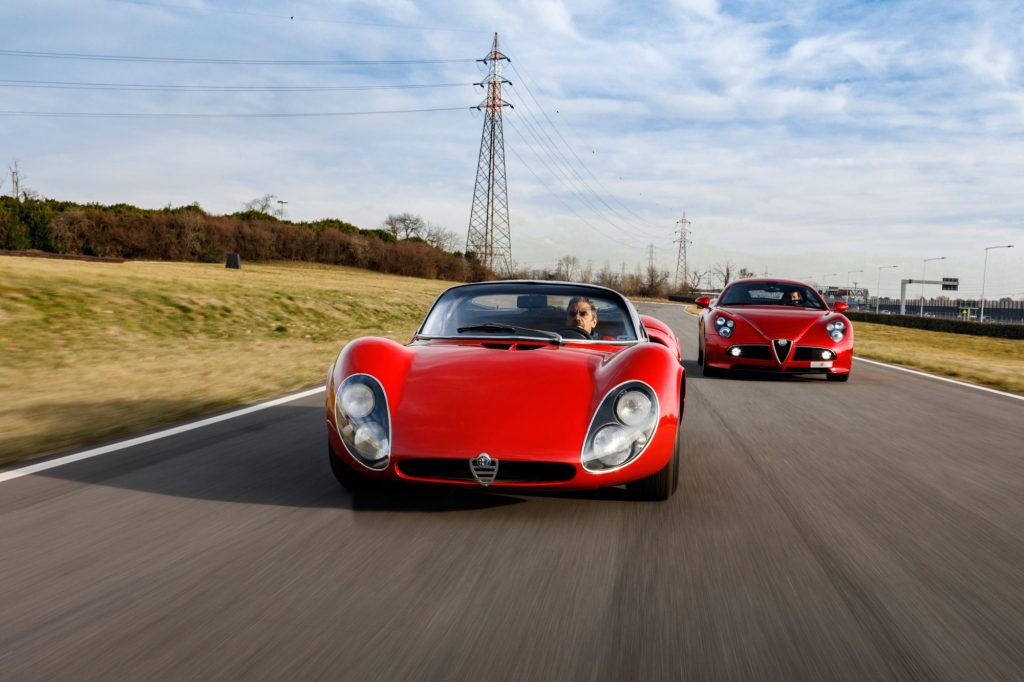
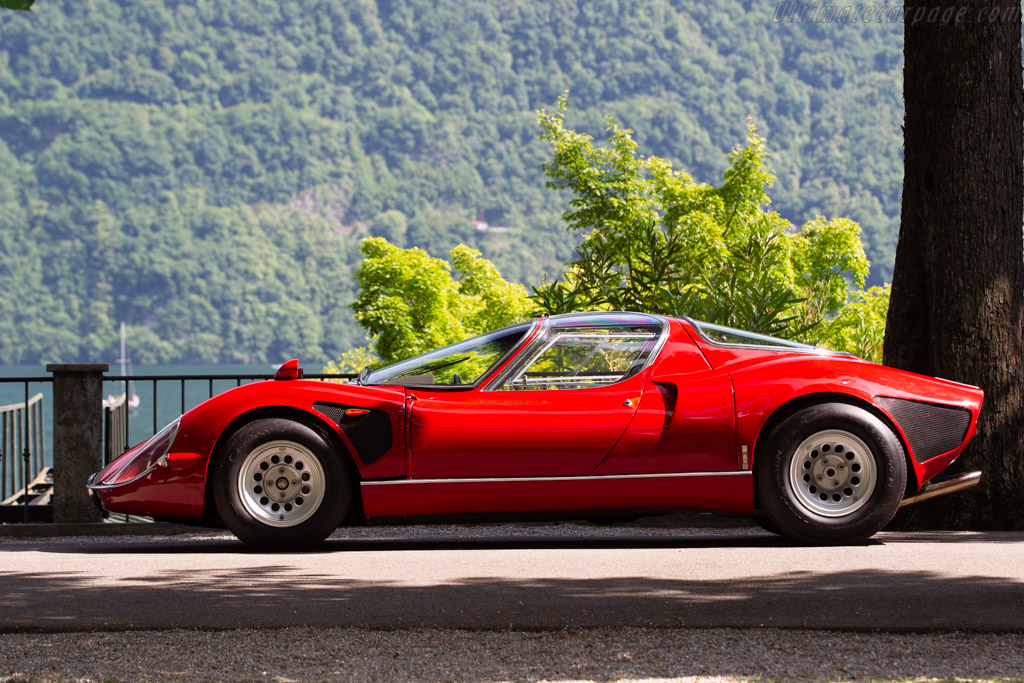
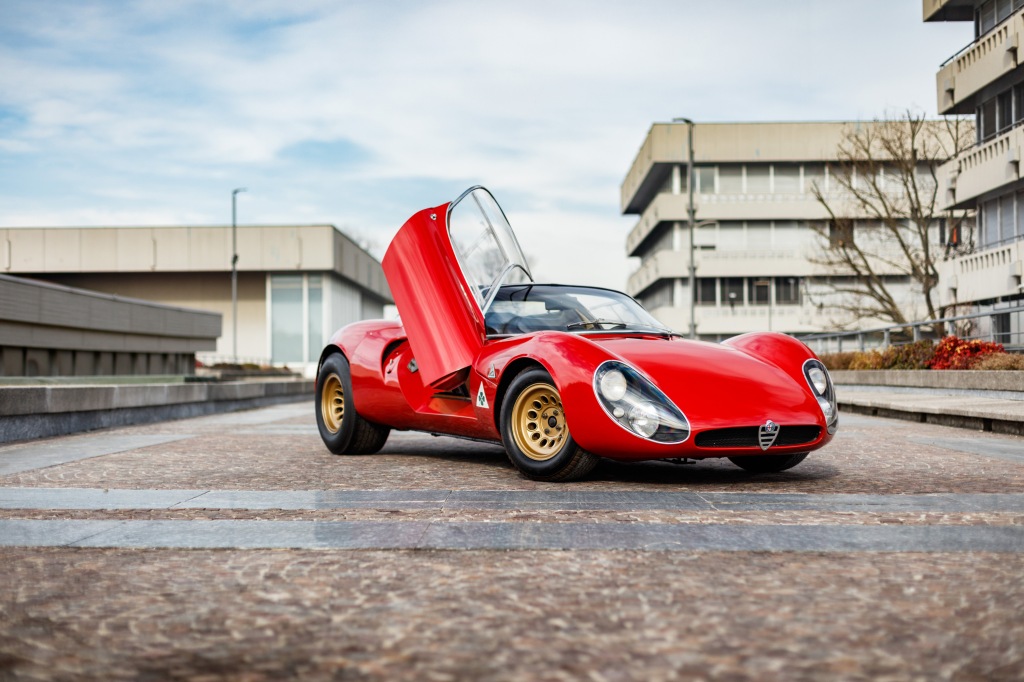
However, to a certain extent, the world seems to have forgotten about this car. One of the reasons – and ultimately the biggest drawback – was its price. Autodelta also gave this project lower priority. They primarily focused on cars intended for sports – because that was, essentially, their purpose. Therefore, their execution… well, it left much to be desired. Carrozzeria Marazzi claims to have built just 18 units. In reality, only 13 of them made it to the market. Four were sent to the design bureaus of Bertone, Pininfarina, and Italdesign Giugiaro, for them to develop concept cars based on Alfa Romeo – including the Carabo project, the first in an aggressively flat wedge shape, which would become the hallmark of the ’70s and ’80s. The last unit remained in the Alfa Romeo museum. They have two Stradale examples in their collection, along with all five concepts based on it – all in perfect working order. Despite there being better cars in its segment – due to the rarity of this model, the beauty of its silhouette, and its characteristics – it is one of the most revered vehicles from this brand, and one of the most beautiful cars that mankind has ever had the privilege to create.
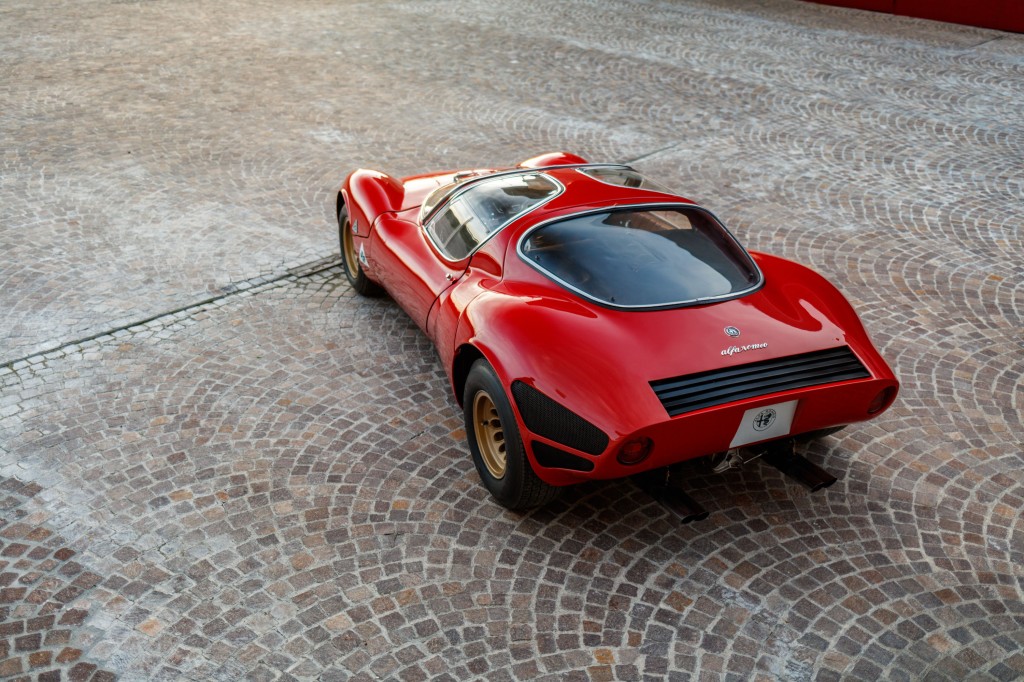
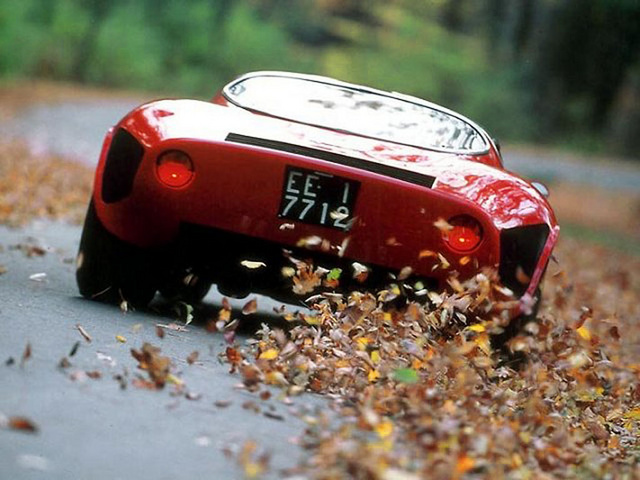
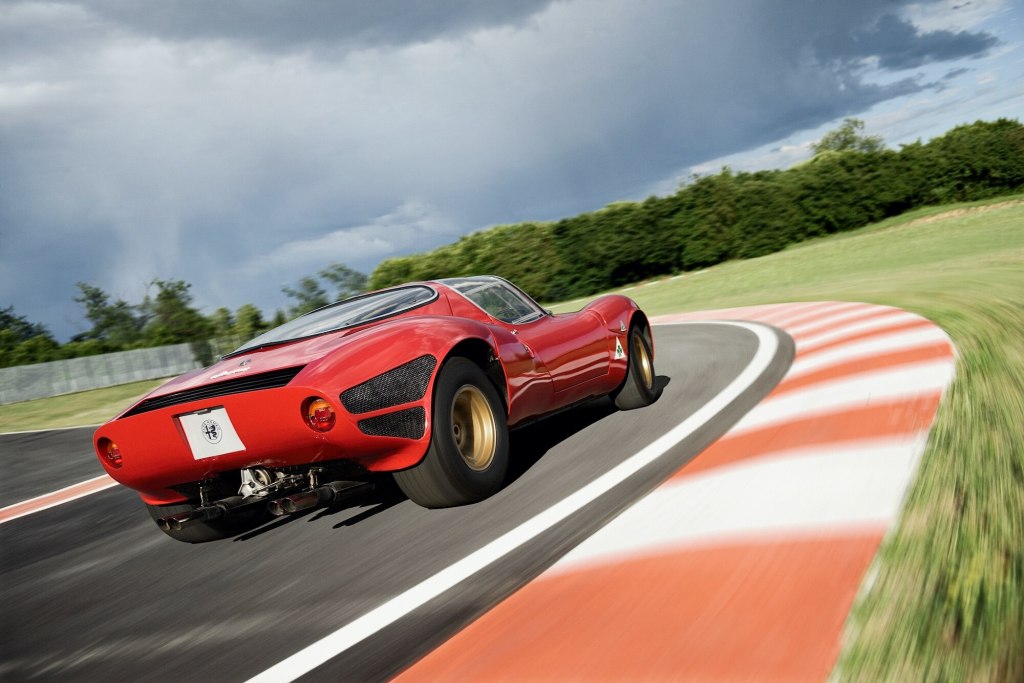
Krzysztof Wilk
All sources: autozine.org | Top Gear: The Cool 500 – The Coolest Cars Ever Made | ultimatecarpage.com | amazingclassiccars.com | motor1.com | petrolicious.com | carsceneinternational.com | sportscardigest.com | YT: Przemek Michalak
